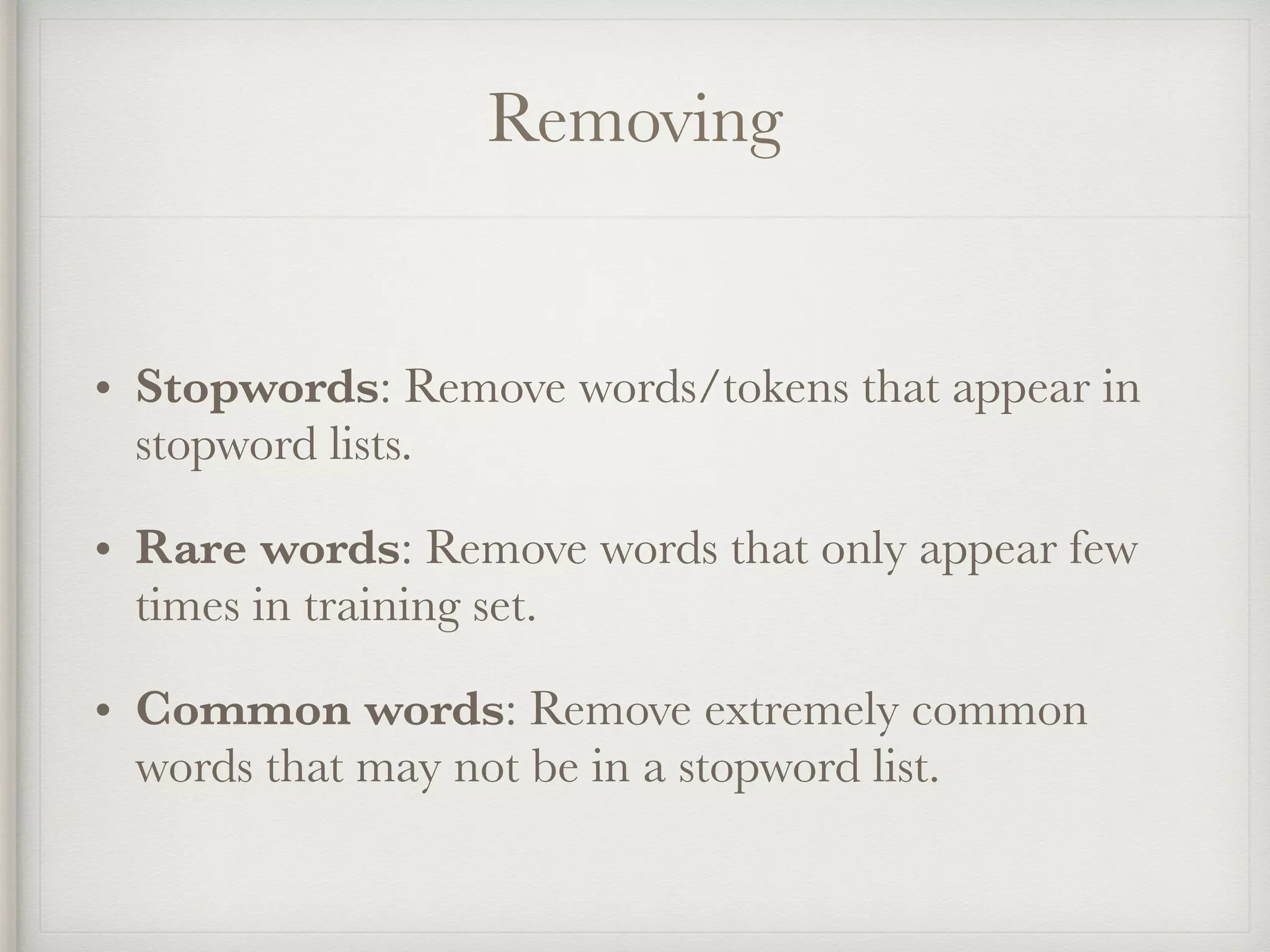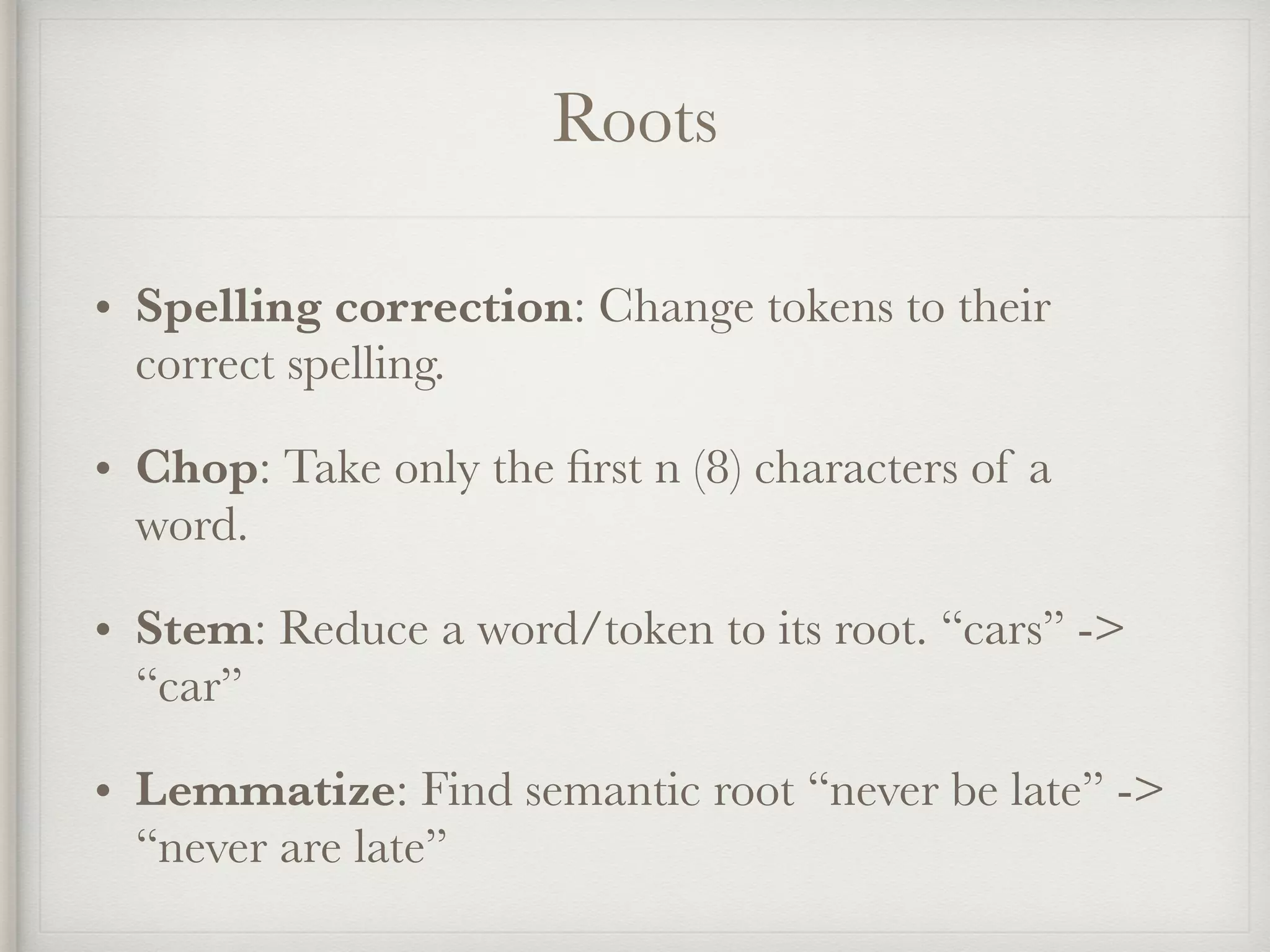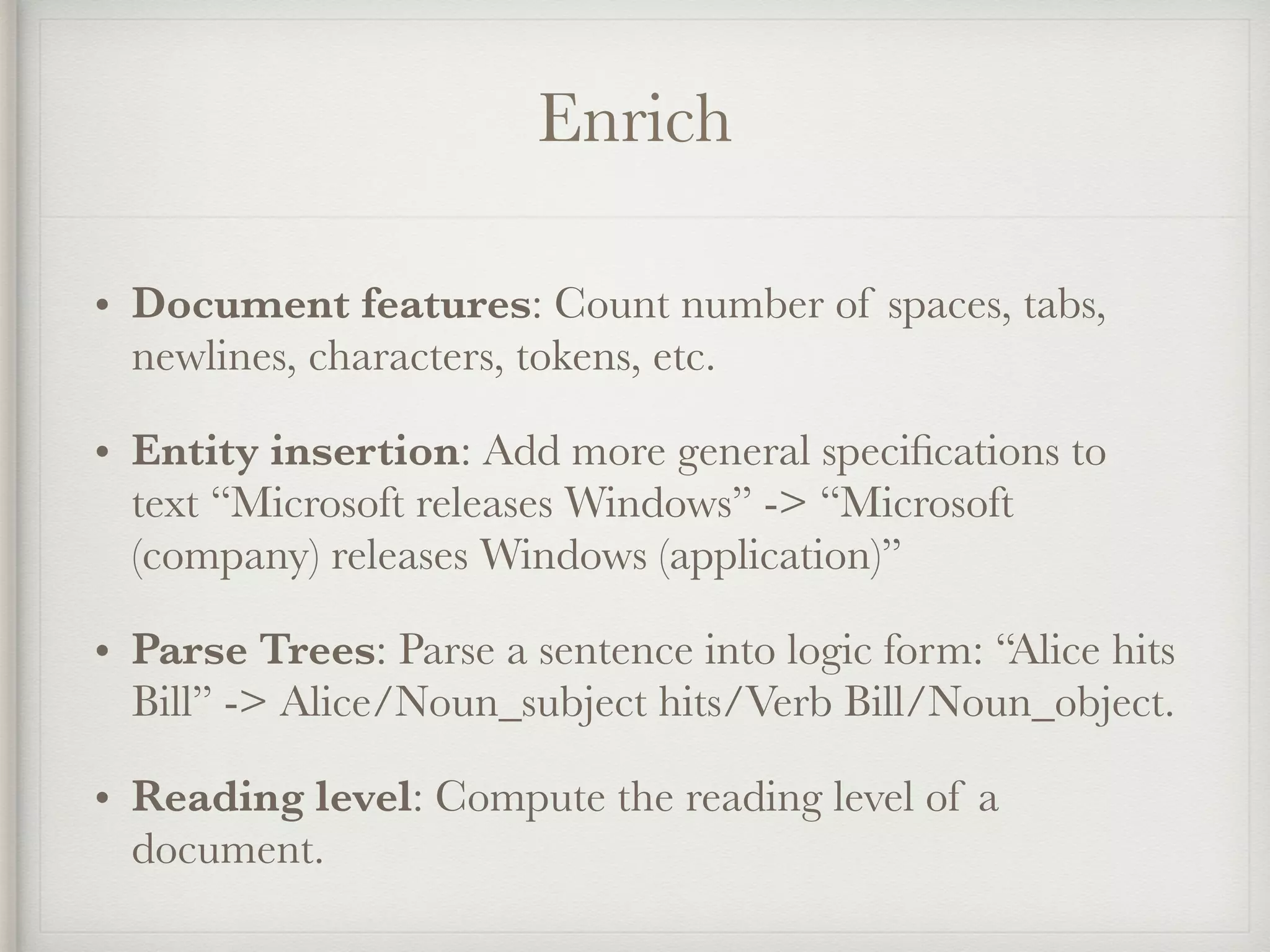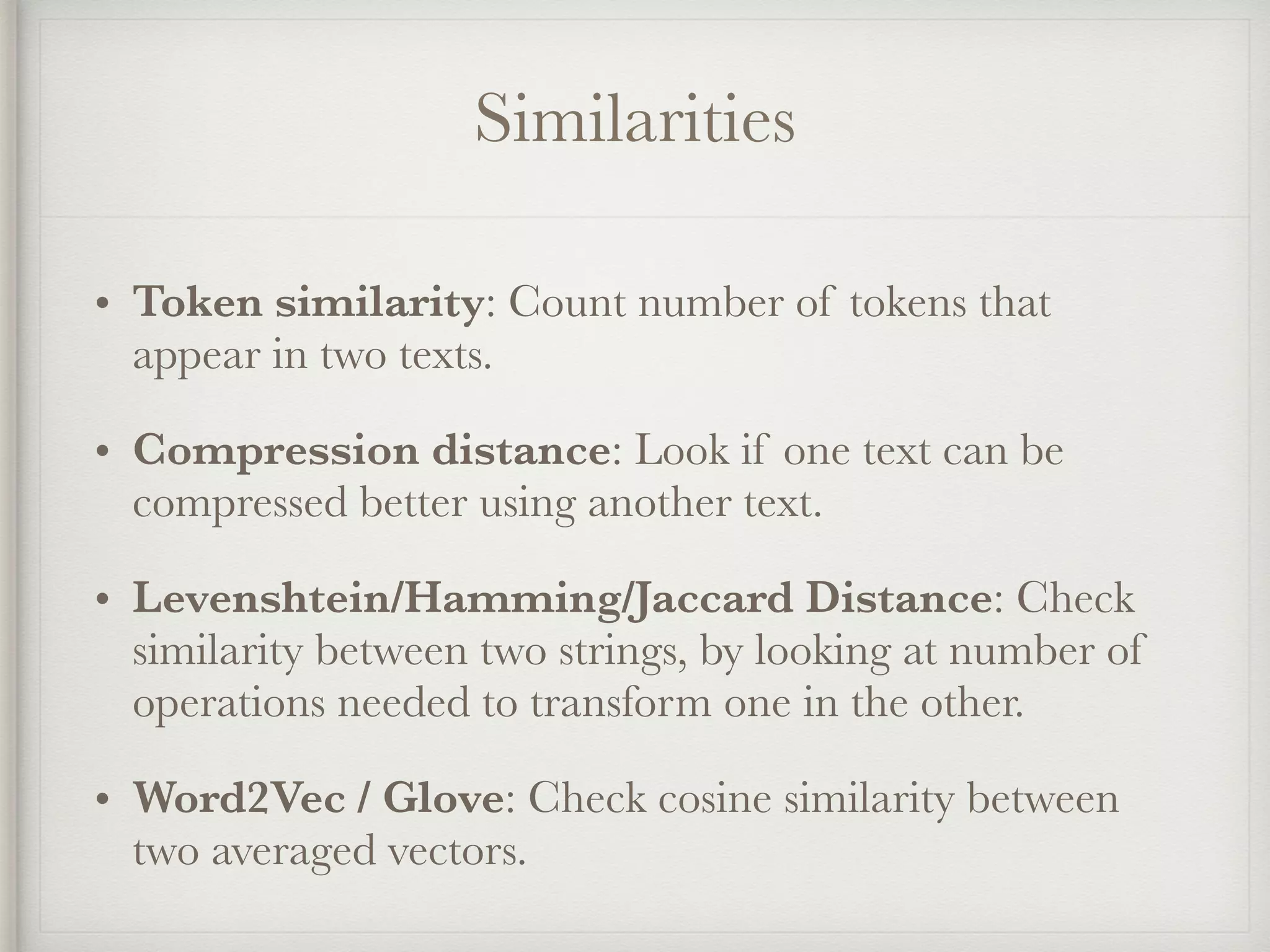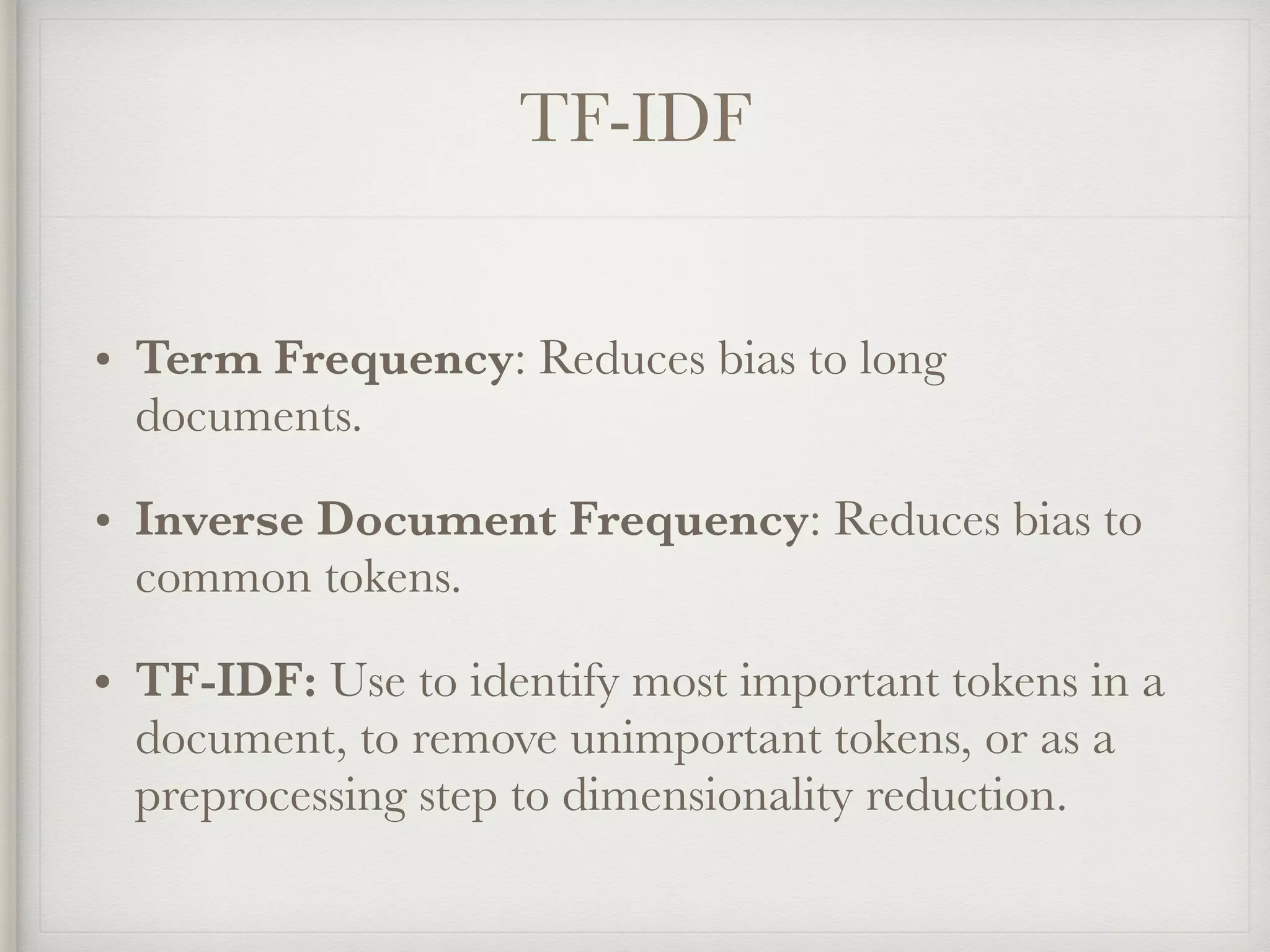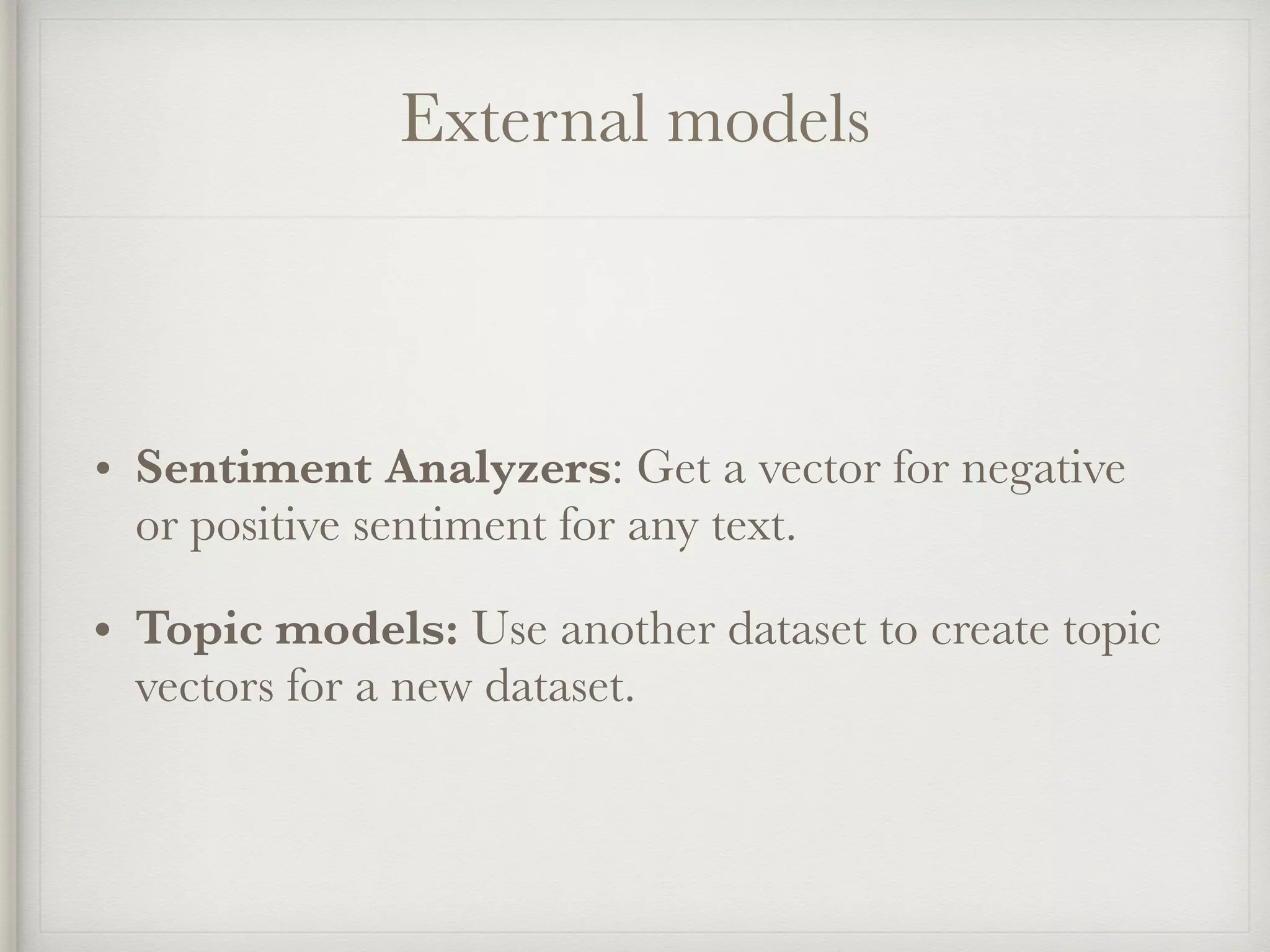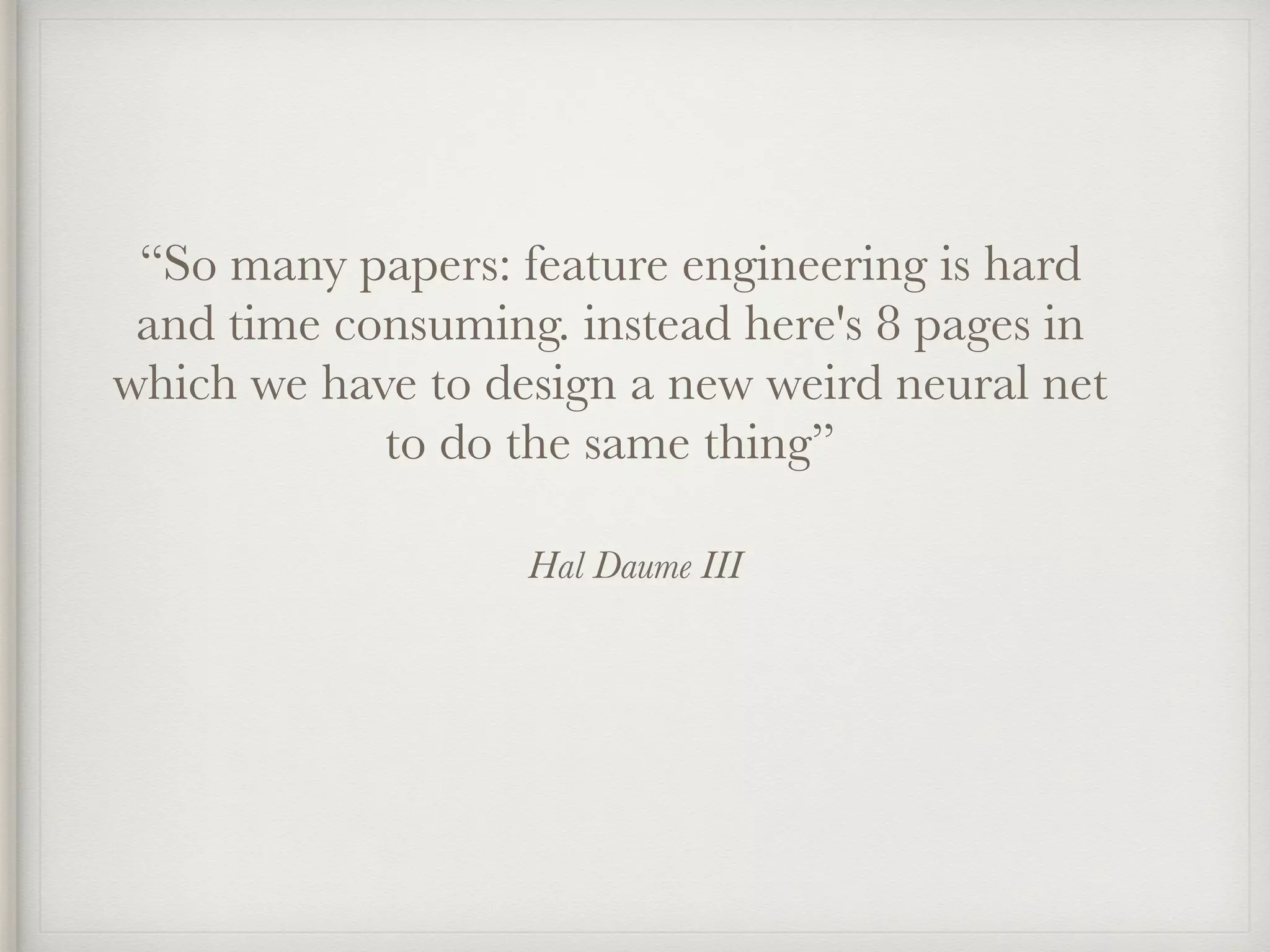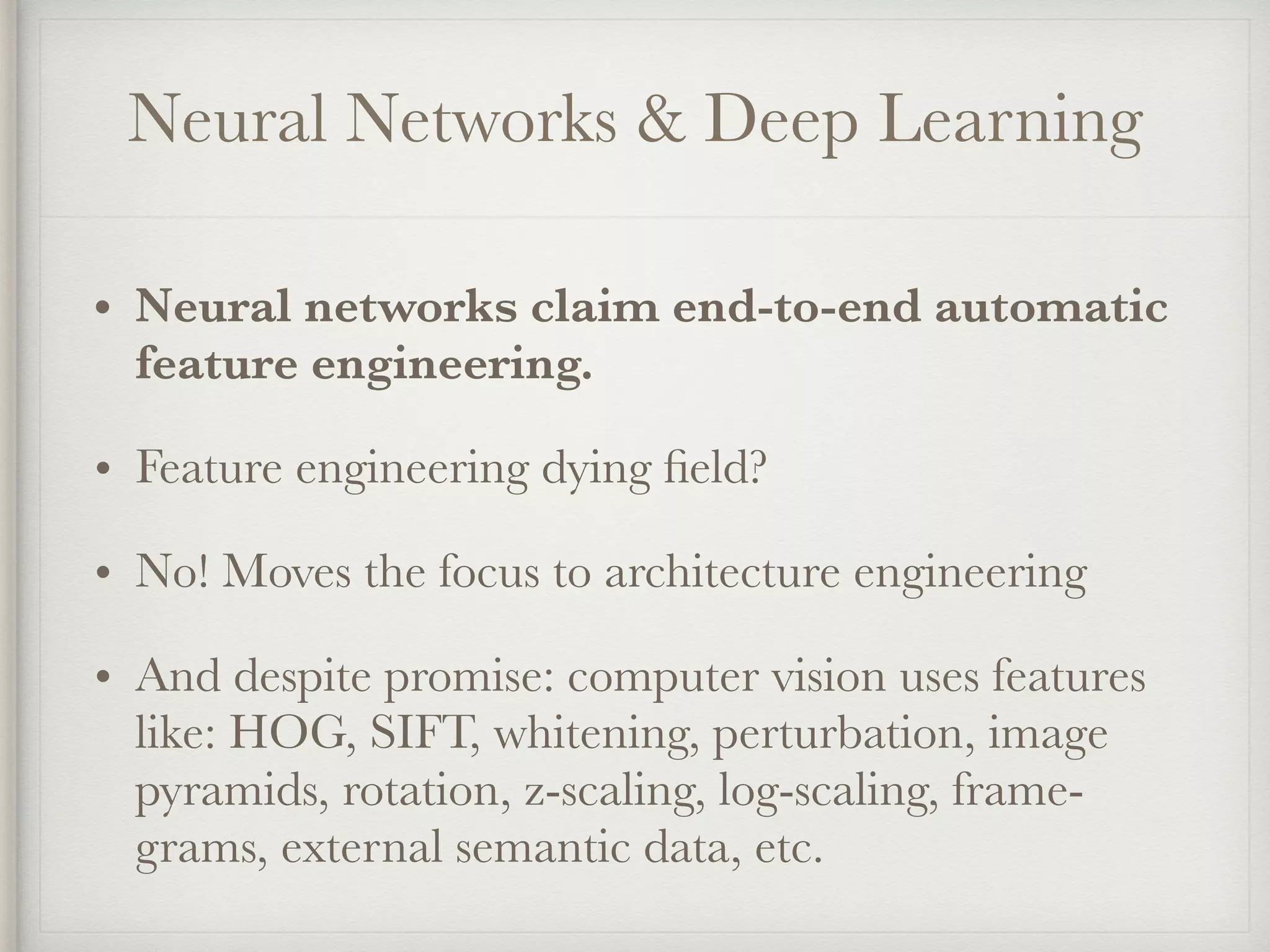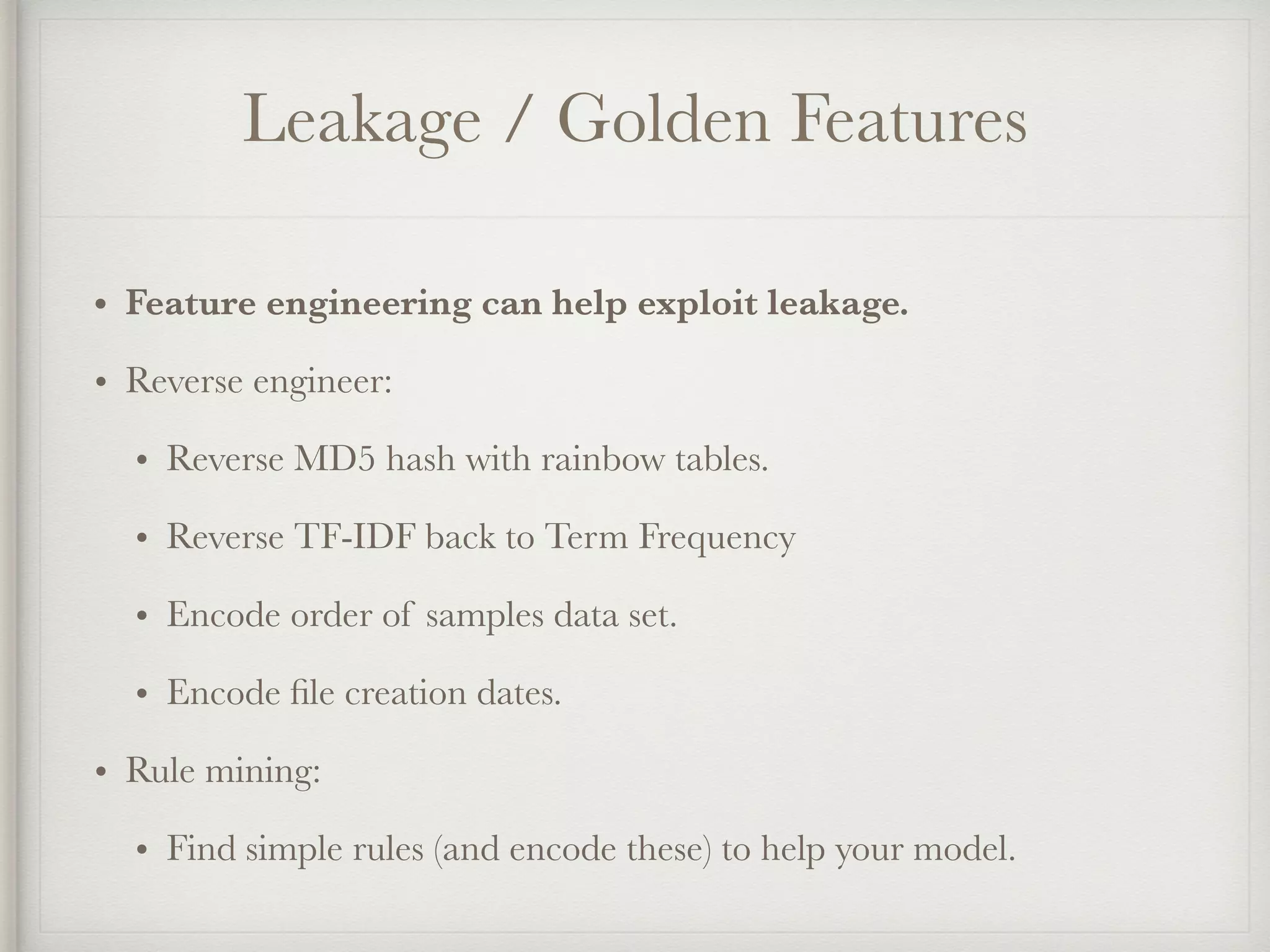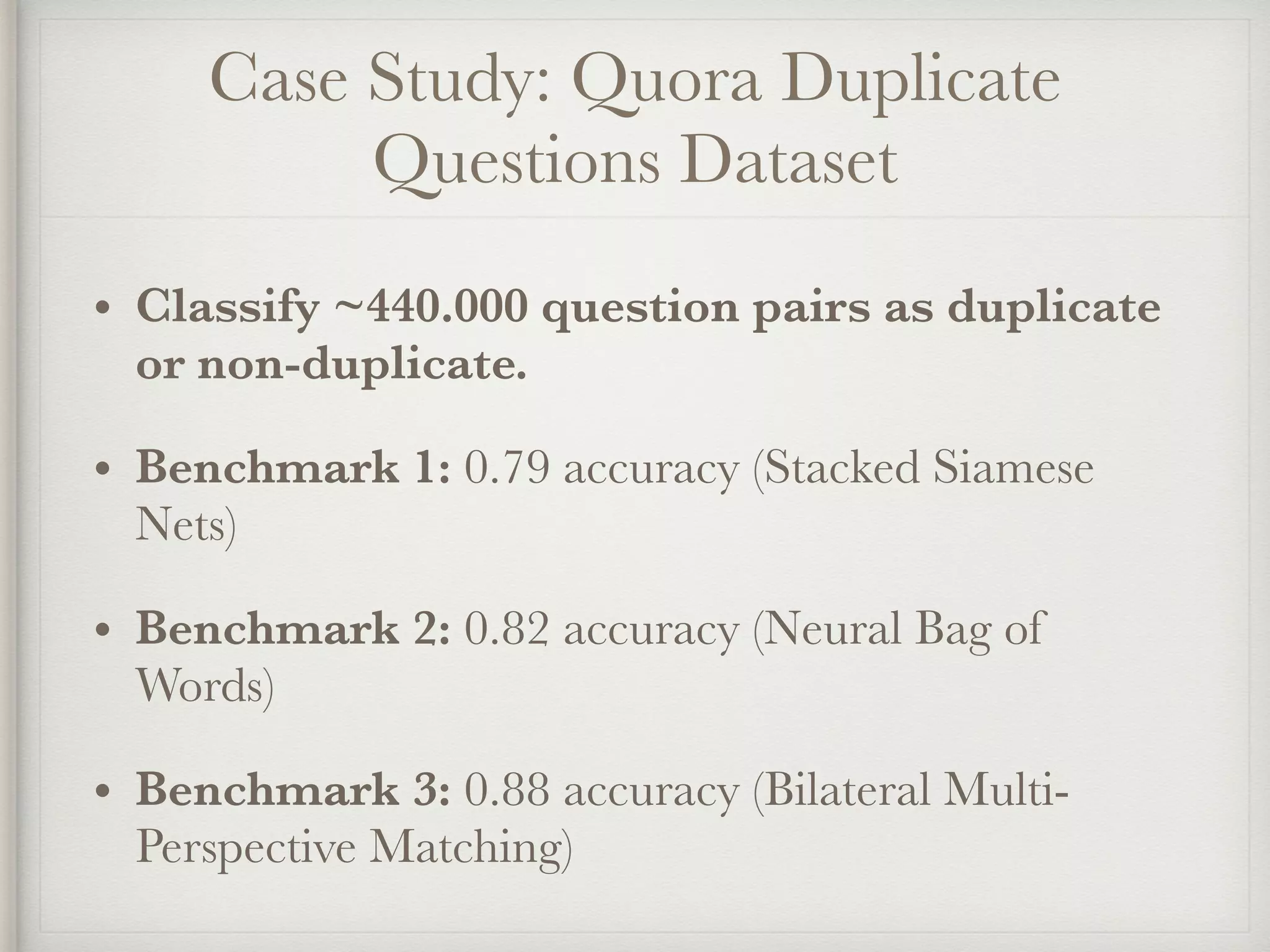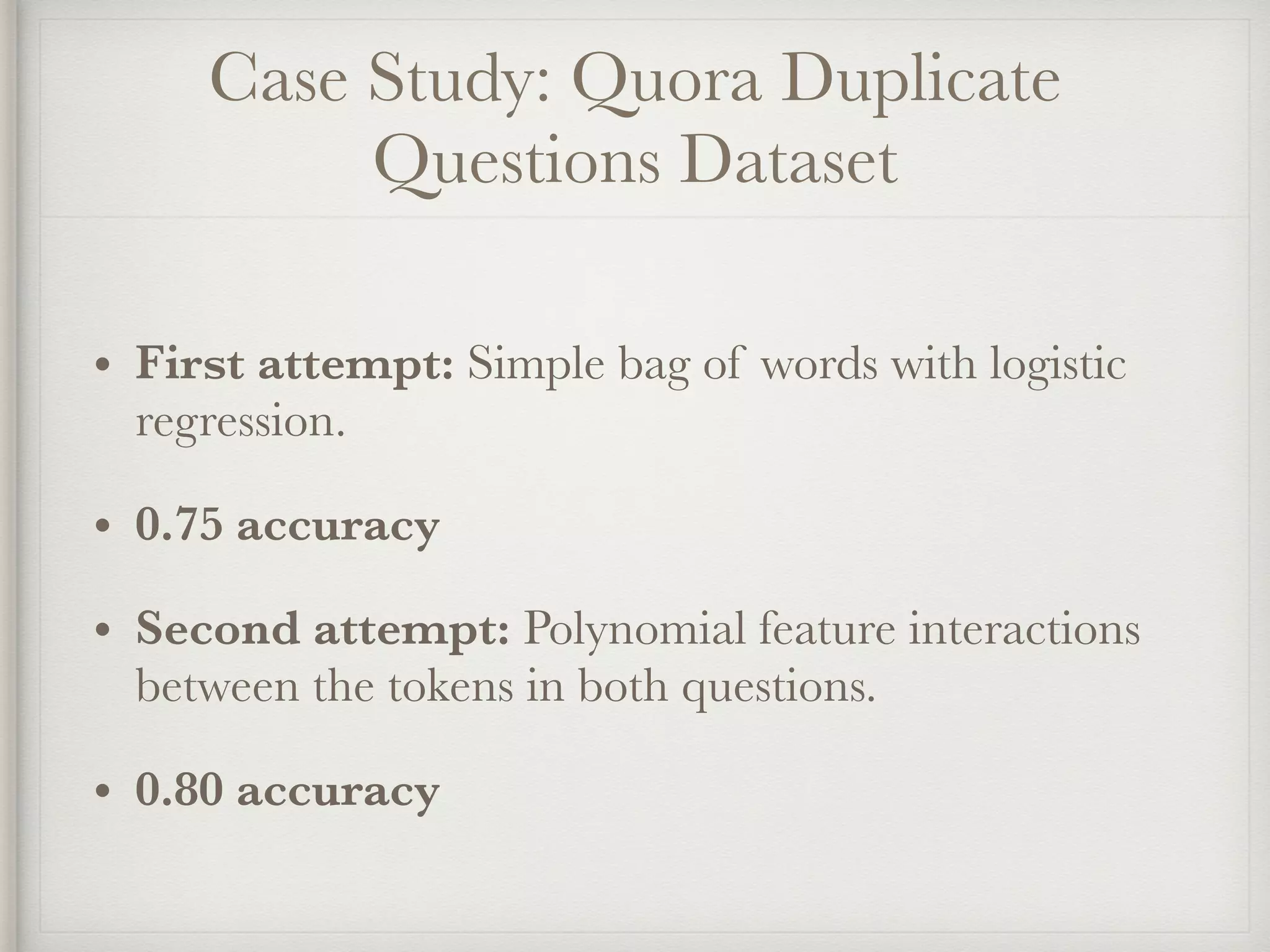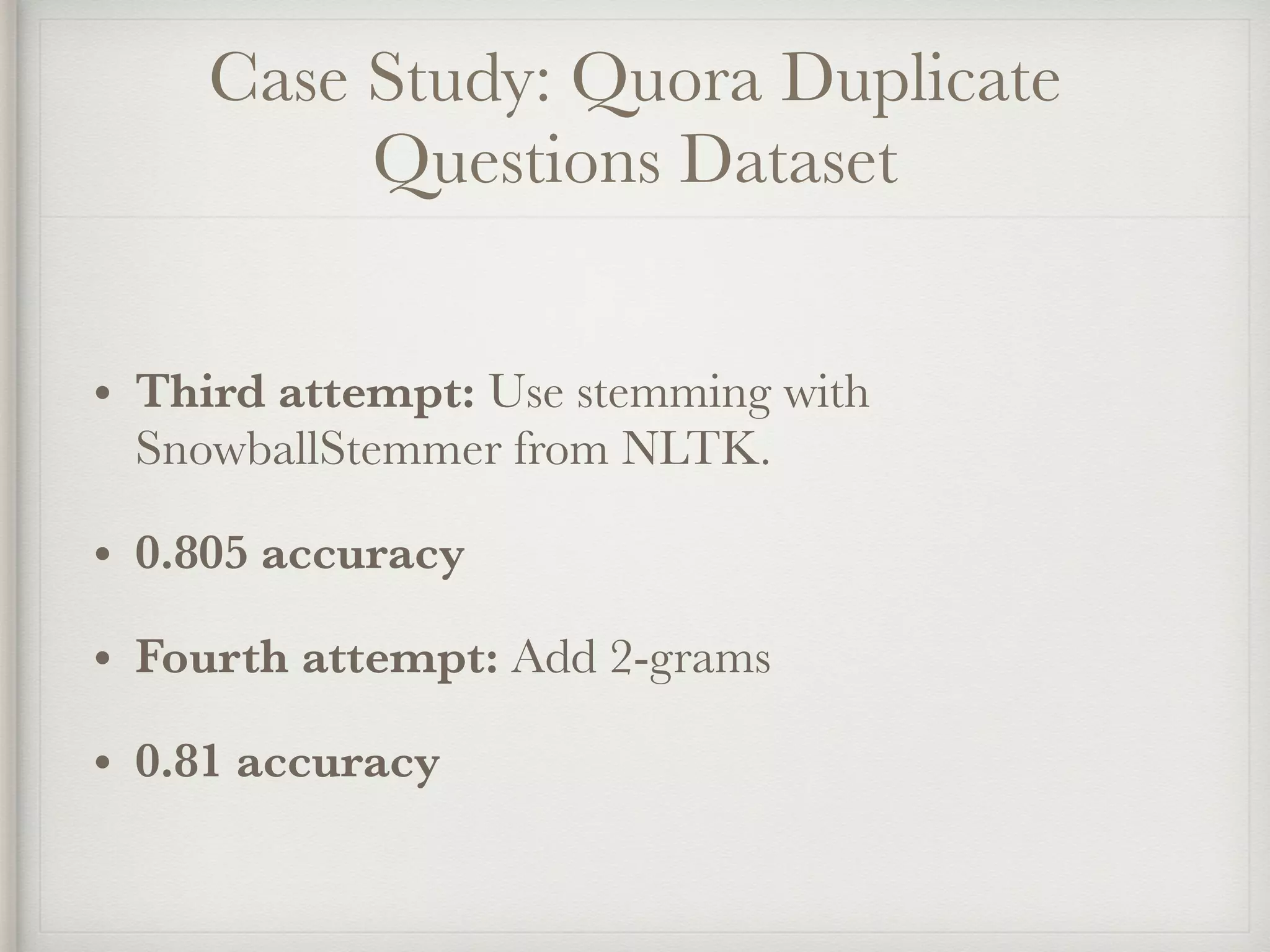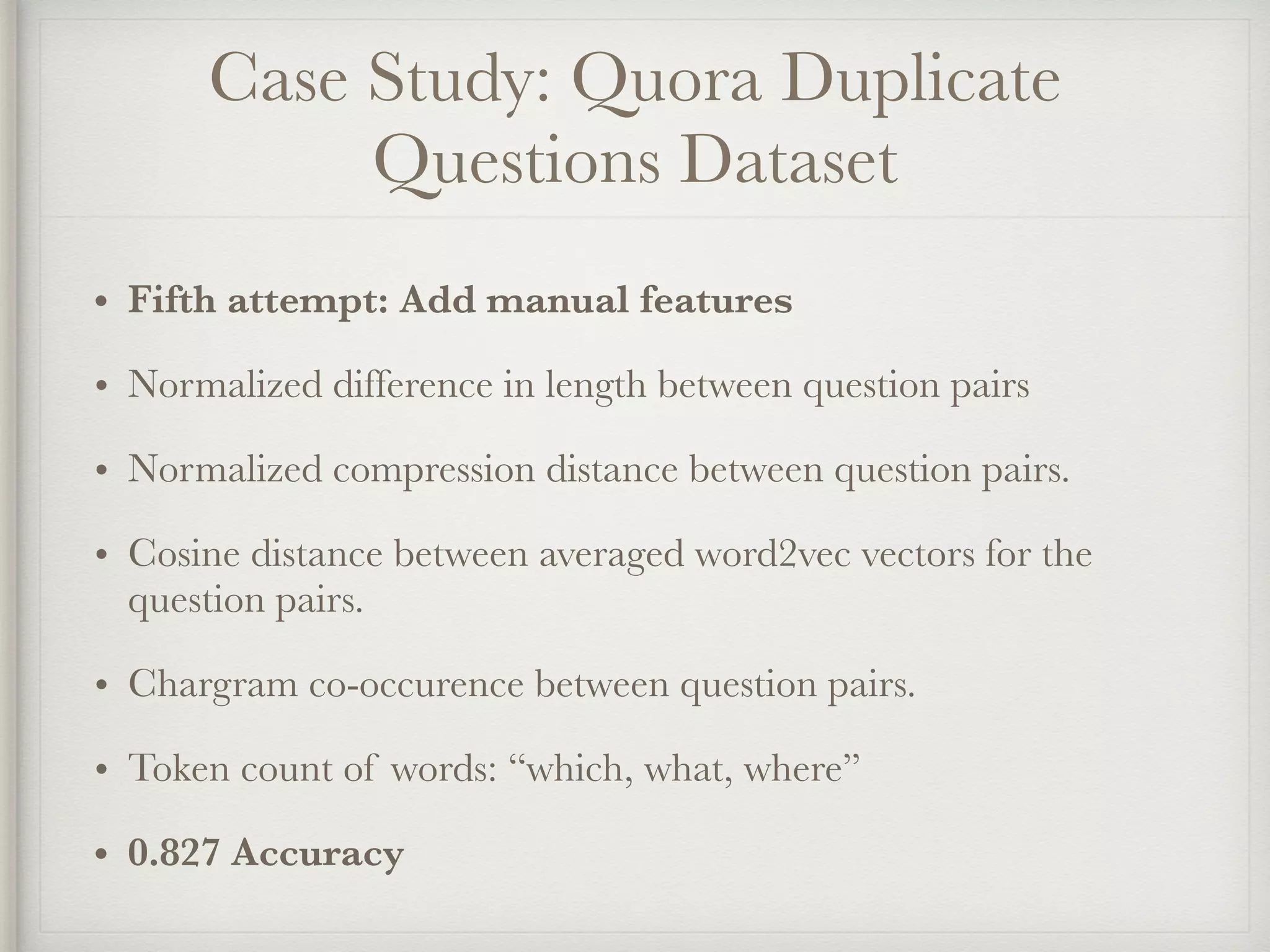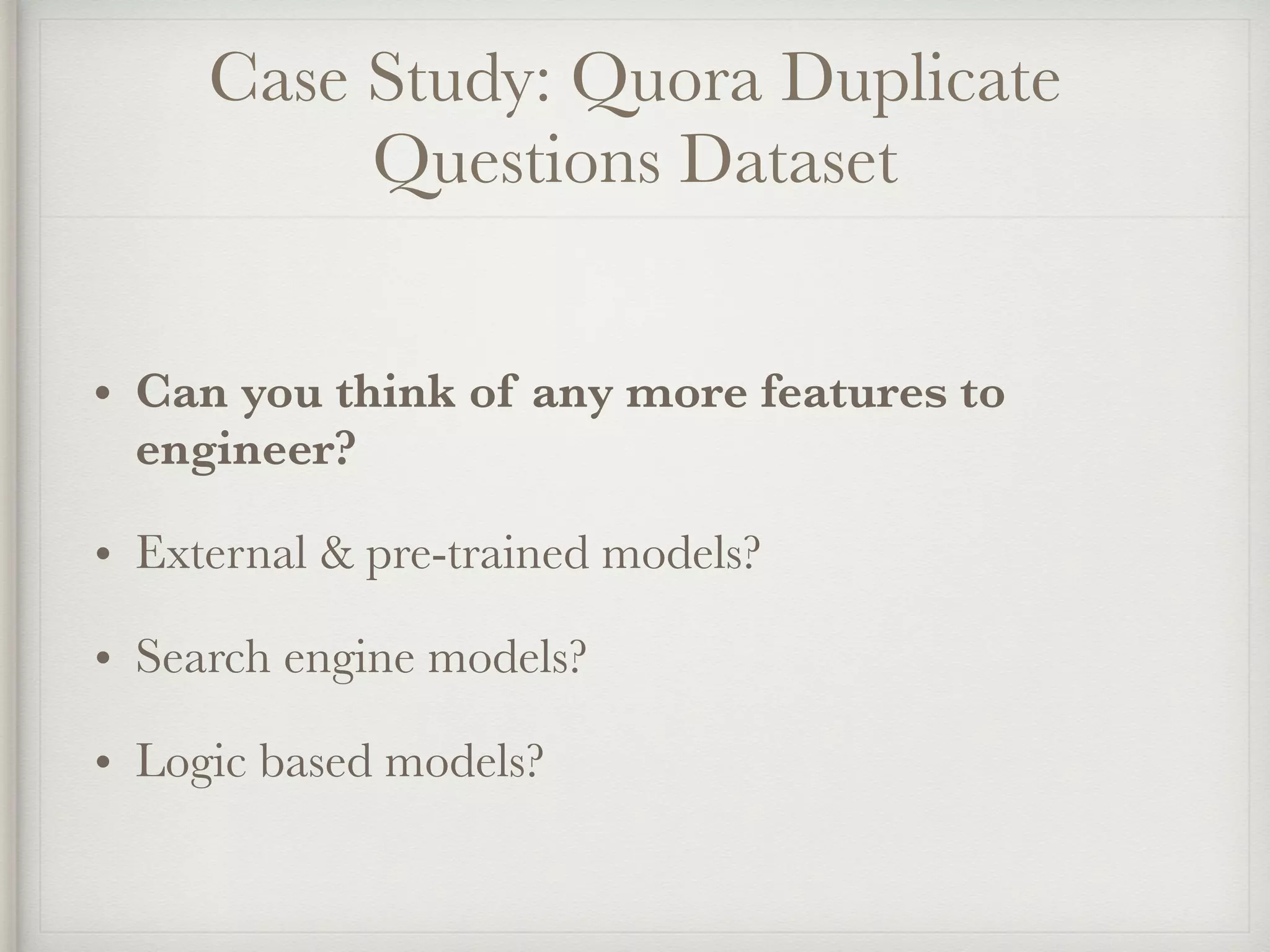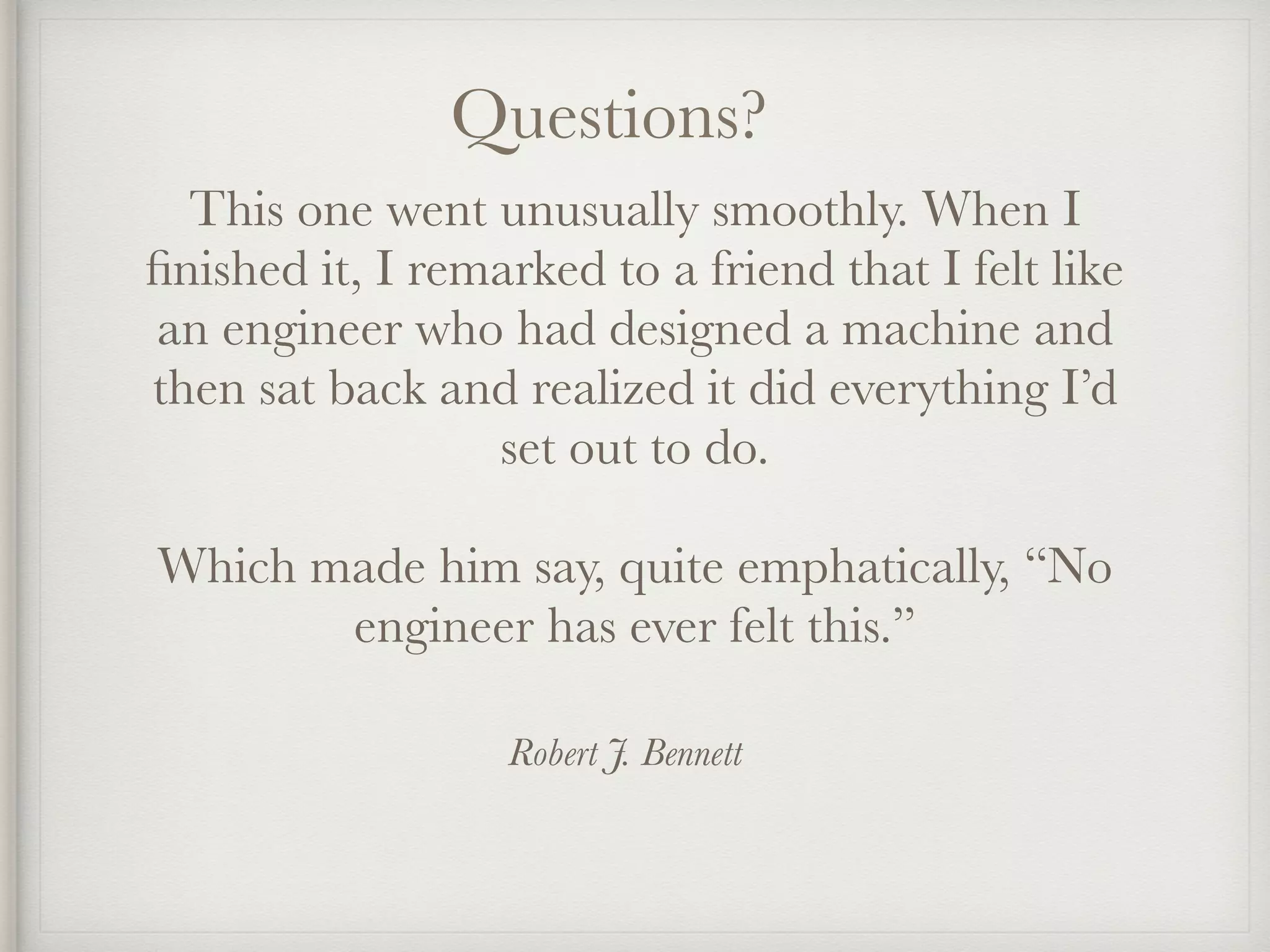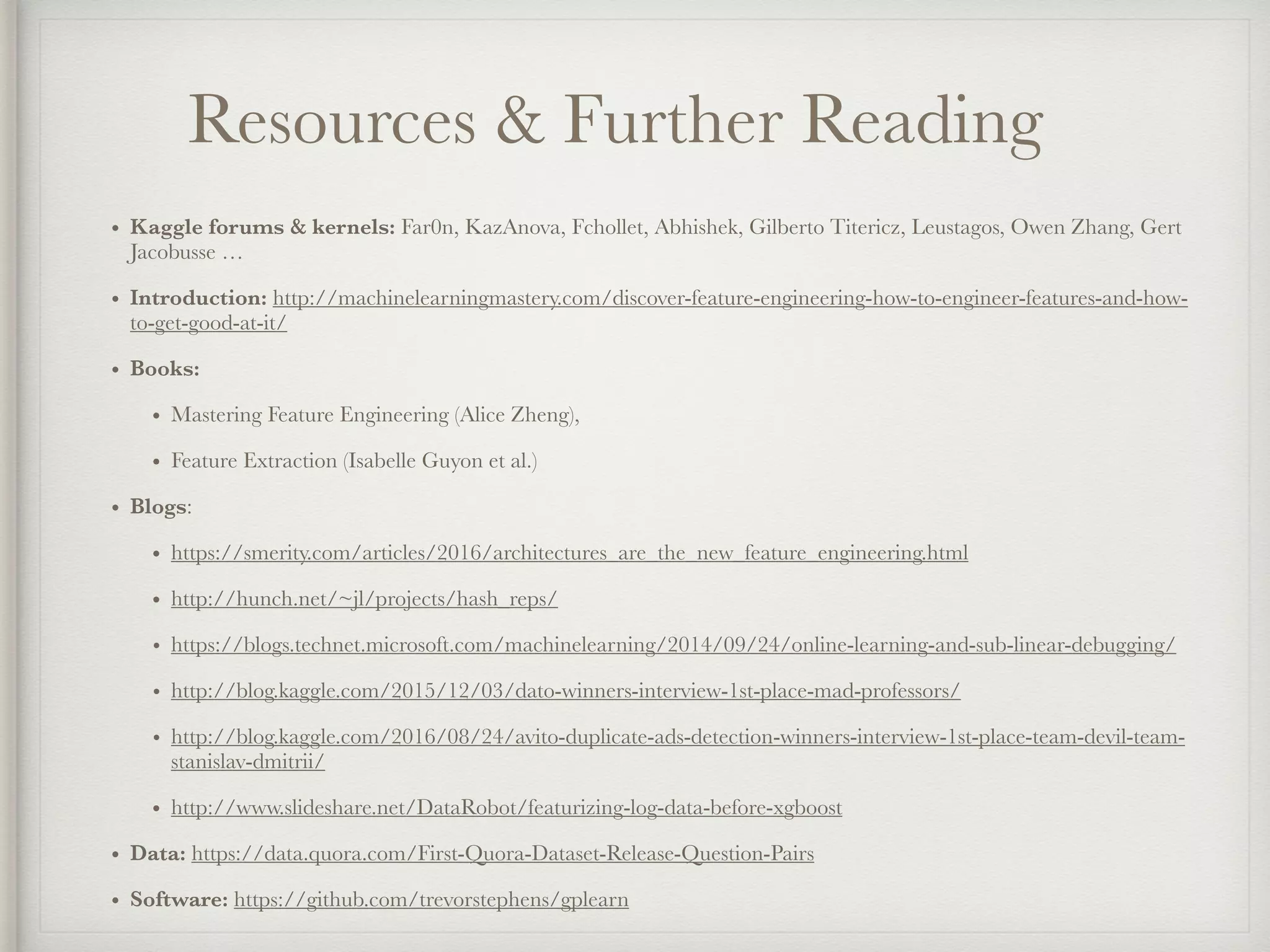The document discusses various feature engineering techniques in data science, emphasizing the importance of transforming data into formats suitable for machine learning algorithms. It covers methods such as one-hot encoding, hash encoding, label encoding, and others, along with their applications and potential pitfalls. The information underscores that effective feature engineering can significantly impact the success of machine learning models.

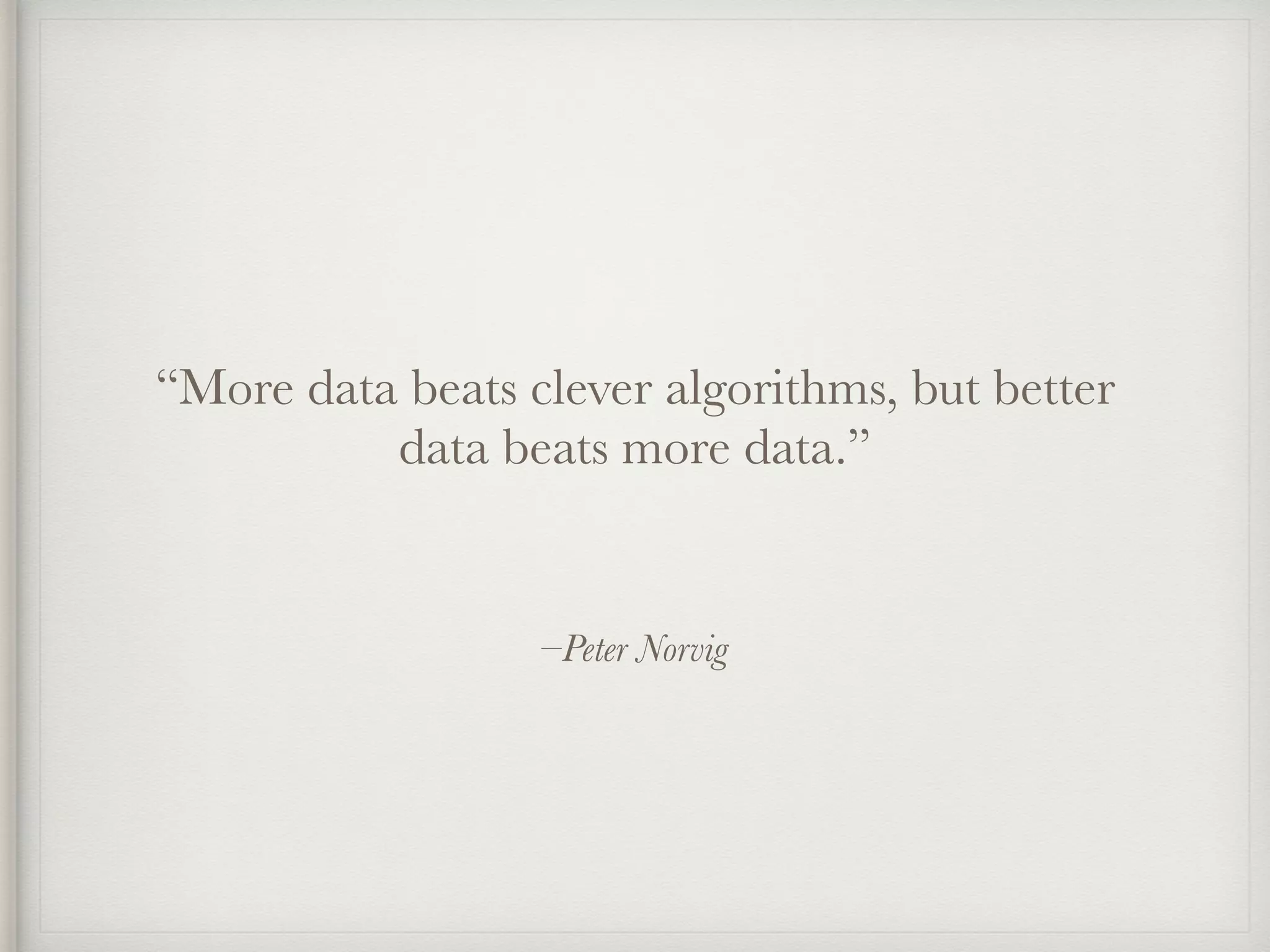
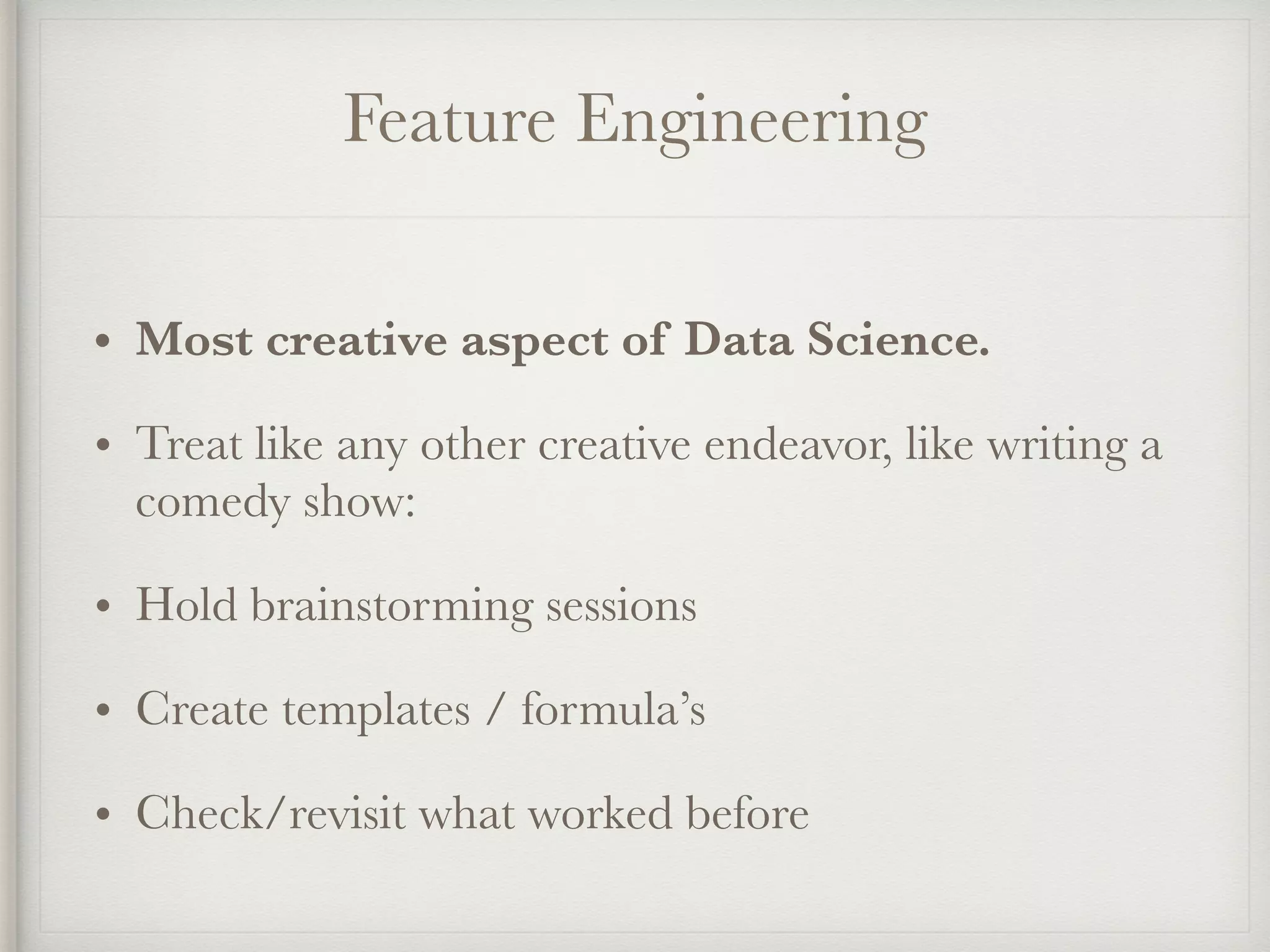
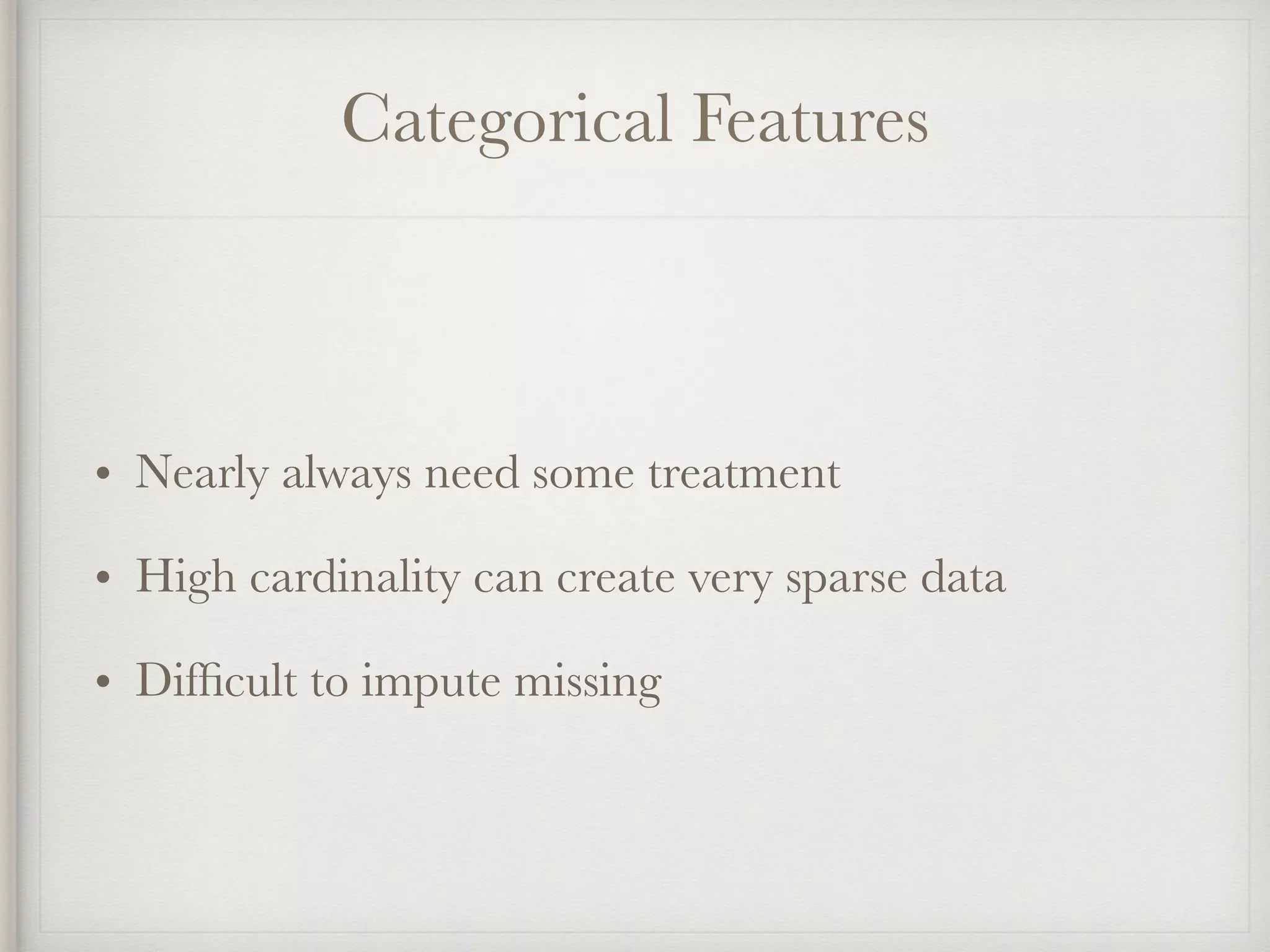

![Onehot encoding
Sample: ["BR"]
country country=NL country=BR country=US
------- ---------- ---------- ----------
NL => [ 0, 1, 0]
BR
US
Encoded dense: [0, 1, 0]
Encoded sparse: 2:1](https://image.slidesharecdn.com/feature-engineering-ml-meetup2-170220185754/75/Feature-Engineering-6-2048.jpg)
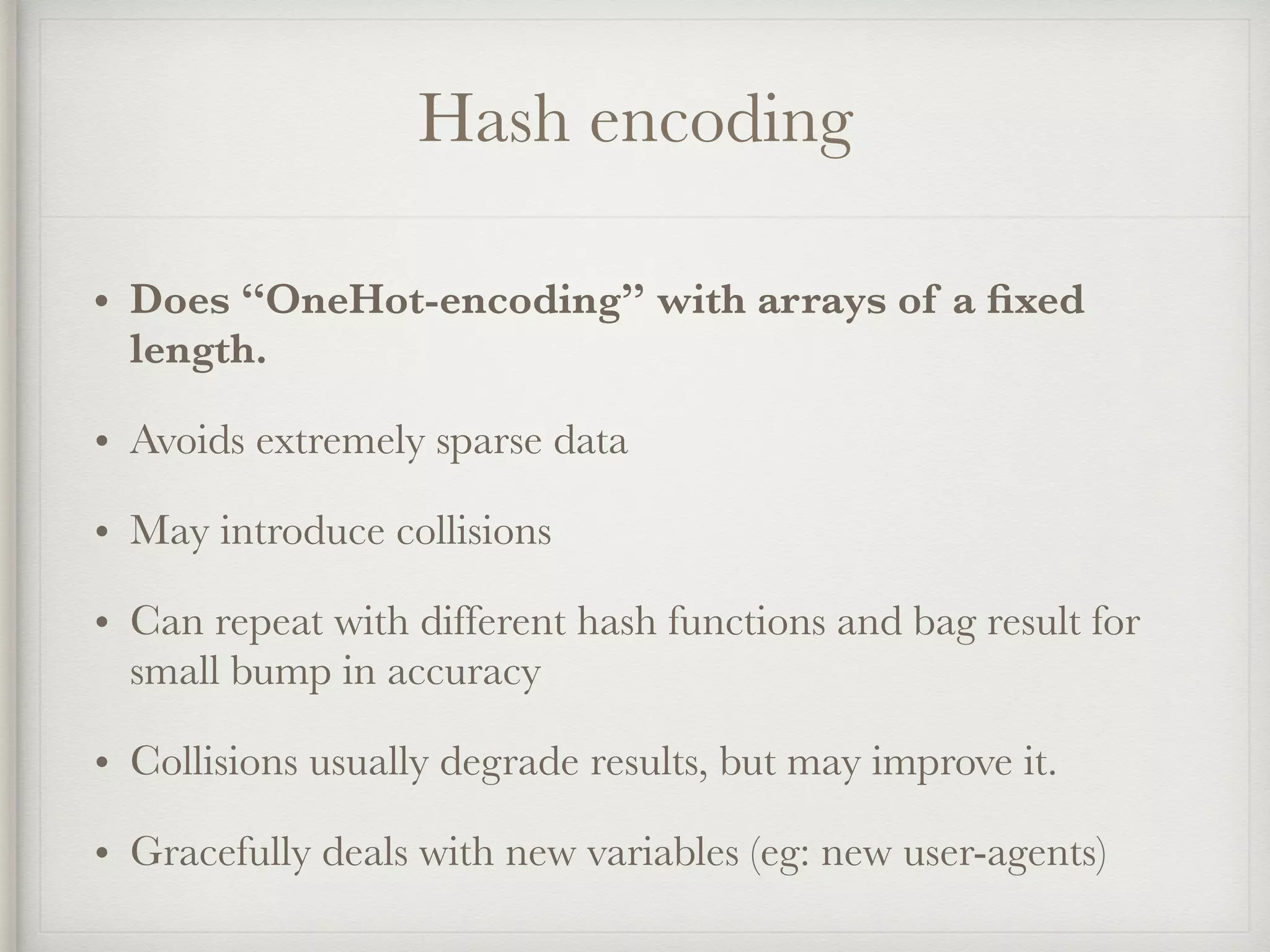
![Hash encoding
Sample: ["BR"]
hash("BR") => `2`
country hash1 hash2 hash3 hash4 hash5
------- ----- ----- ----- ----- -----
NL => [ 0 1, 0 0, 0]
BR
US
Encoded dense: [0, 1, 0, 0, 0]
Encoded sparse: 2:1](https://image.slidesharecdn.com/feature-engineering-ml-meetup2-170220185754/75/Feature-Engineering-8-2048.jpg)
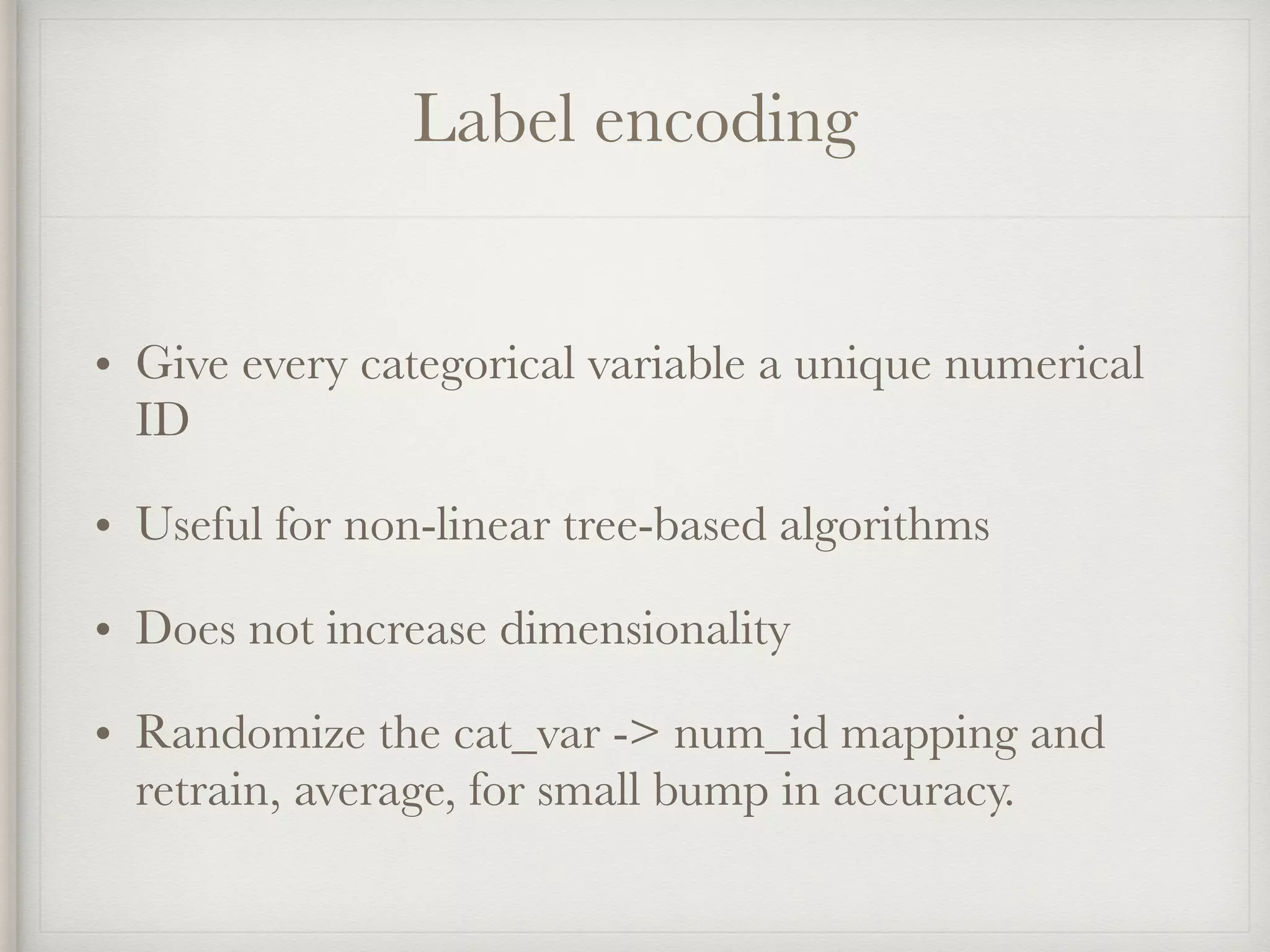
![Label encoding
Sample: ["Queenstown"]
city city
----------- ----
Cherbourg 1
Queenstown => 2
Southampton 3
Encoded: [2]](https://image.slidesharecdn.com/feature-engineering-ml-meetup2-170220185754/75/Feature-Engineering-10-2048.jpg)
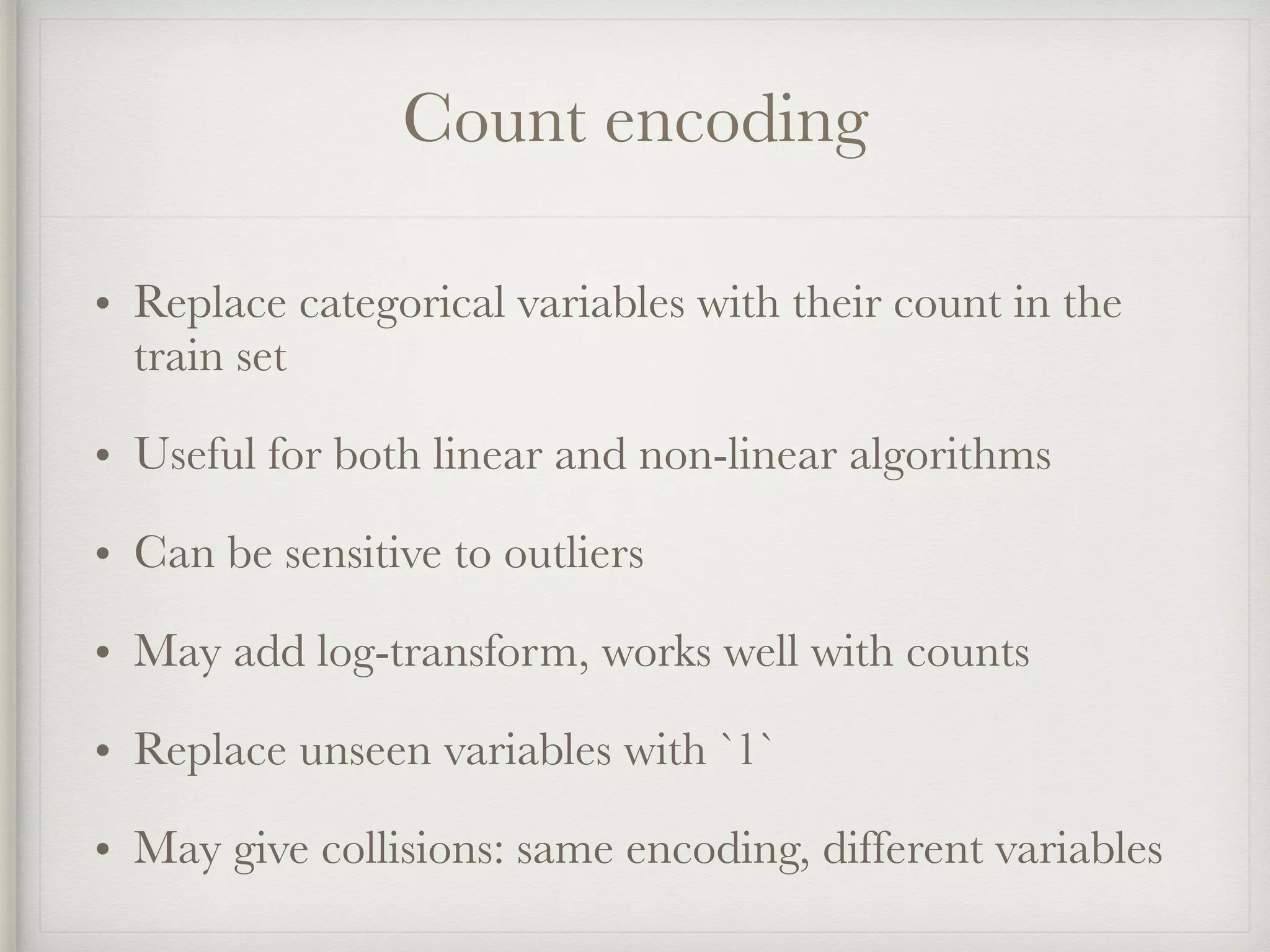
![Count encoding
Sample: ["A6GHBD78"]
teacher_ID teacher_ID
---------- ----------
DEADB33F 4
A6GHBD78 3
DEADB33F 4
FCKGWRHQ => 1
DEADB33F 4
A6GHBD78 3
A6GHBD78 3
DEADB33F 4
encoded: [3]](https://image.slidesharecdn.com/feature-engineering-ml-meetup2-170220185754/75/Feature-Engineering-12-2048.jpg)
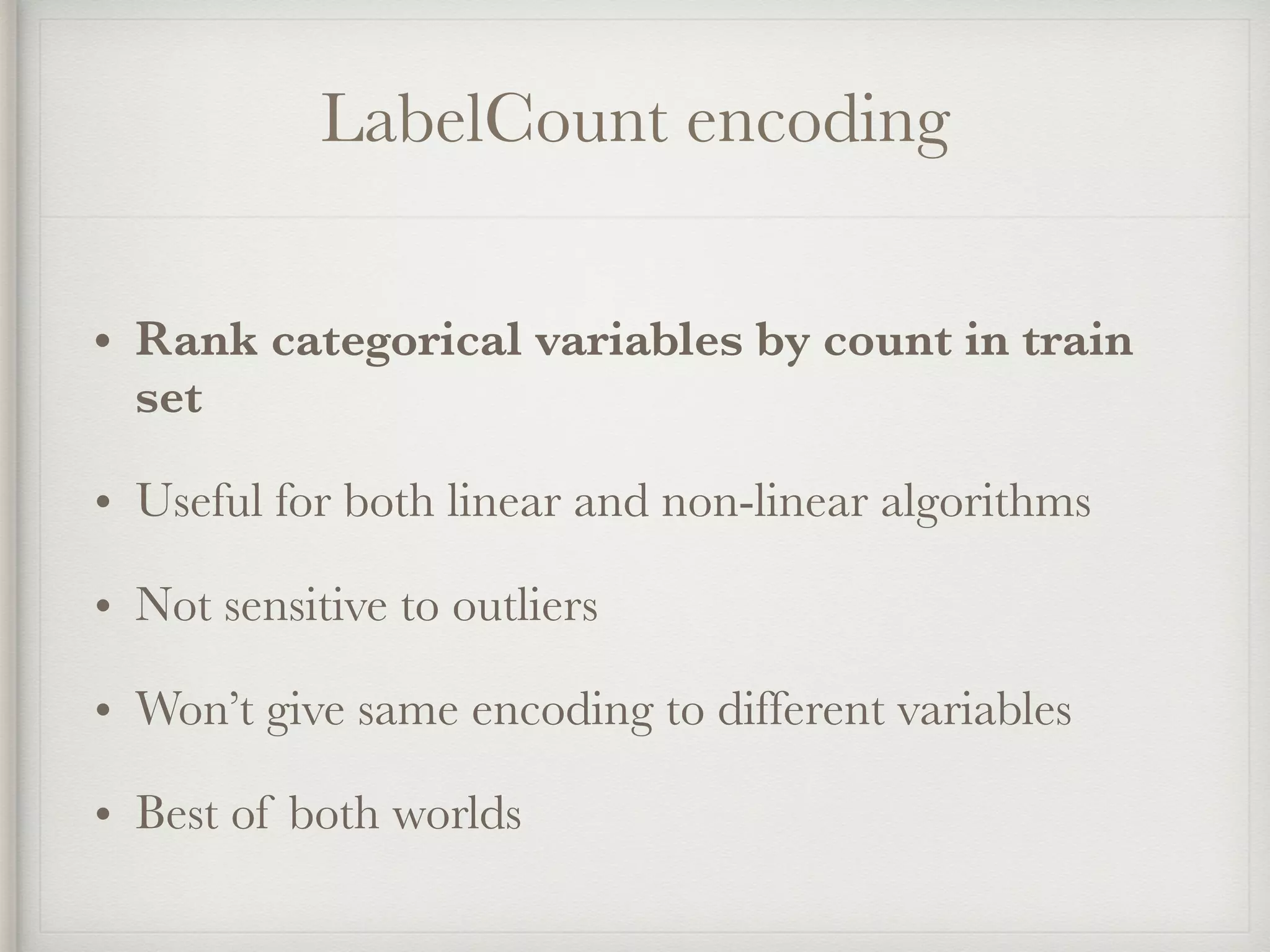
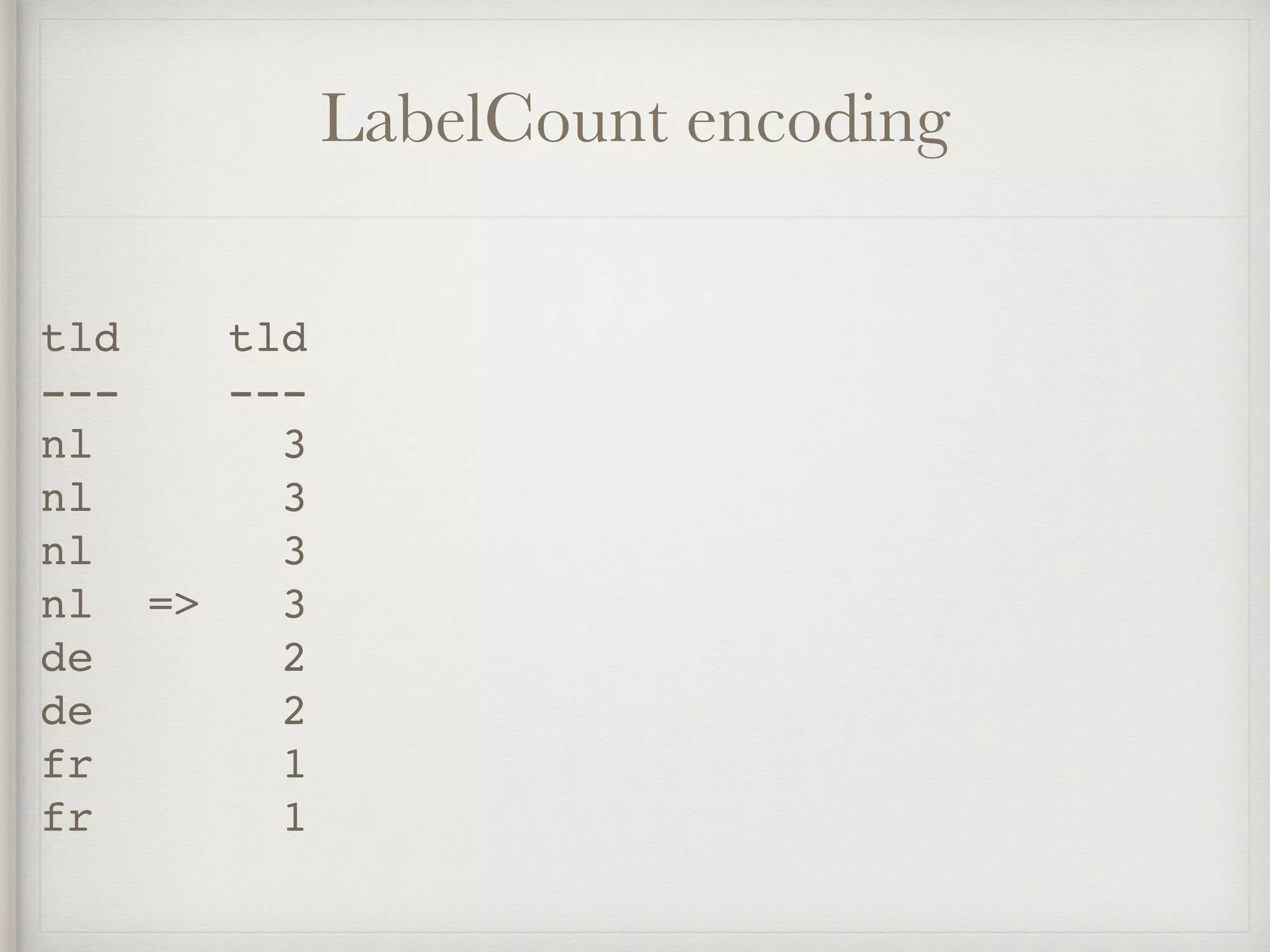
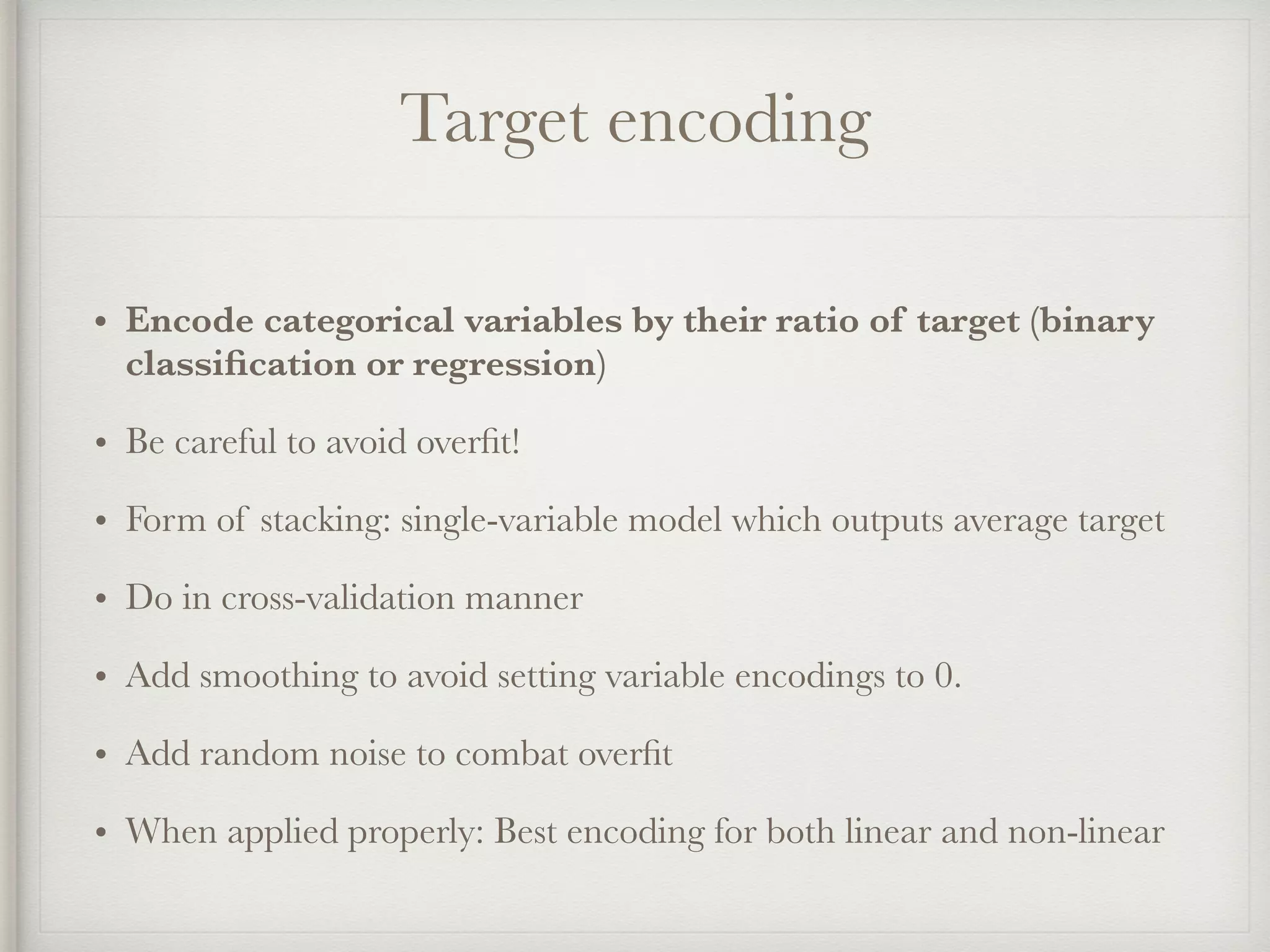
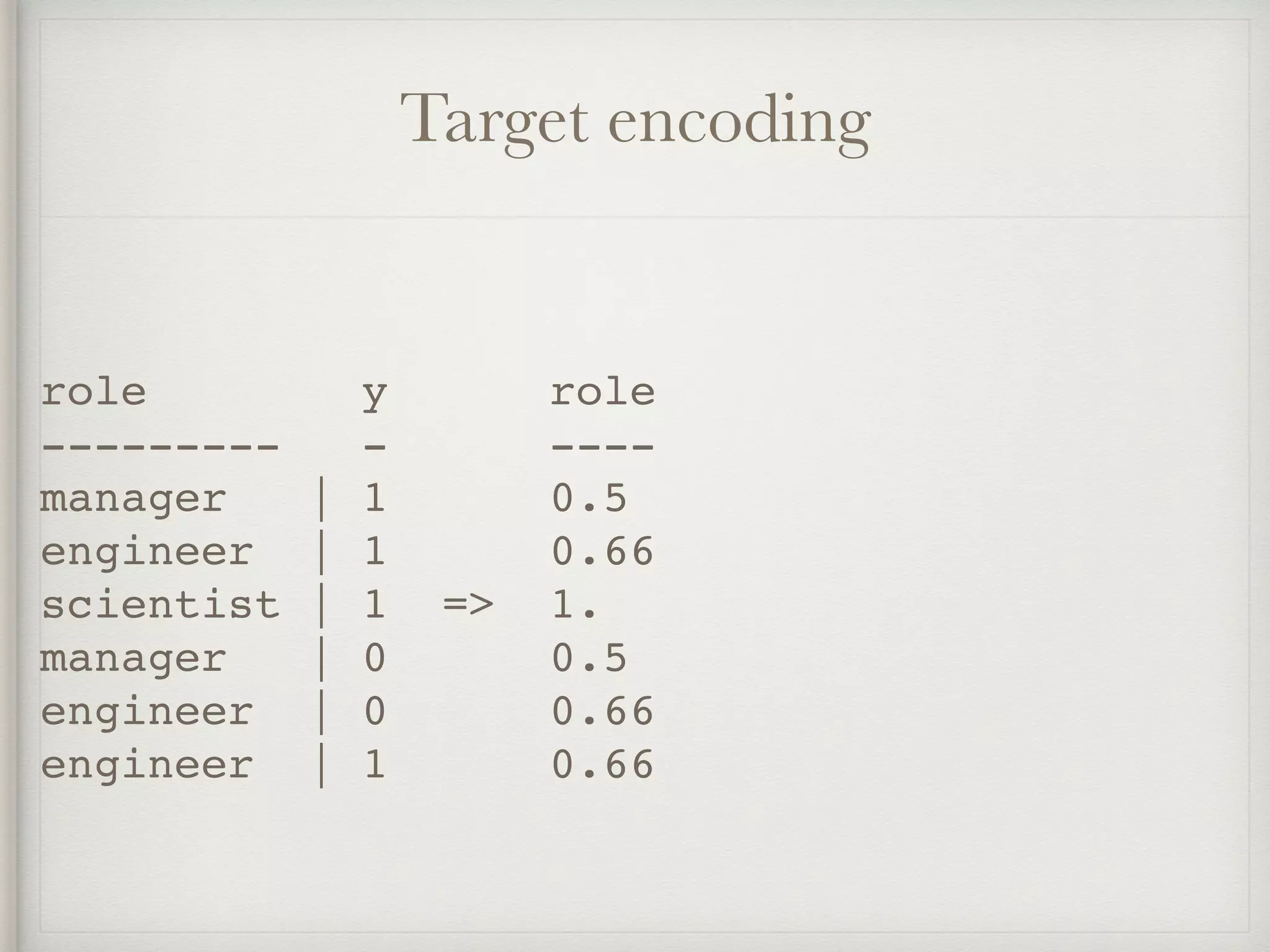
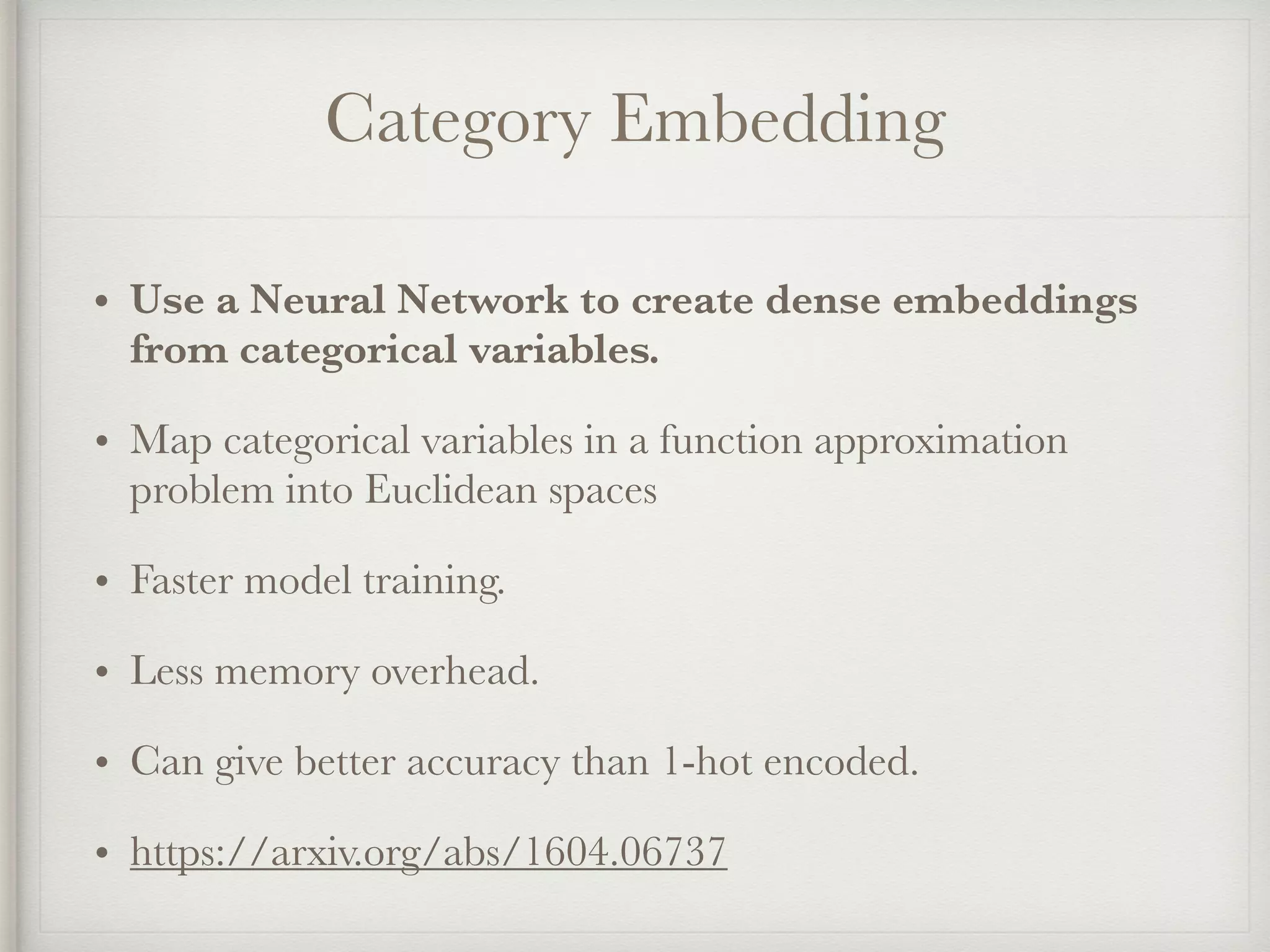
![Category Embedding
role role 3-D embedding
--------- —————————————————-
manager | [0.05, 0.10, 0.96]
engineer | [0.72, 0.66, 0.17]
scientist | [0.75, 0.62, 0.15]
manager | [0.05, 0.10, 0.96]
engineer | [0.72, 0.66, 0.17]
engineer | [0.72, 0.66, 0.17]](https://image.slidesharecdn.com/feature-engineering-ml-meetup2-170220185754/75/Feature-Engineering-18-2048.jpg)
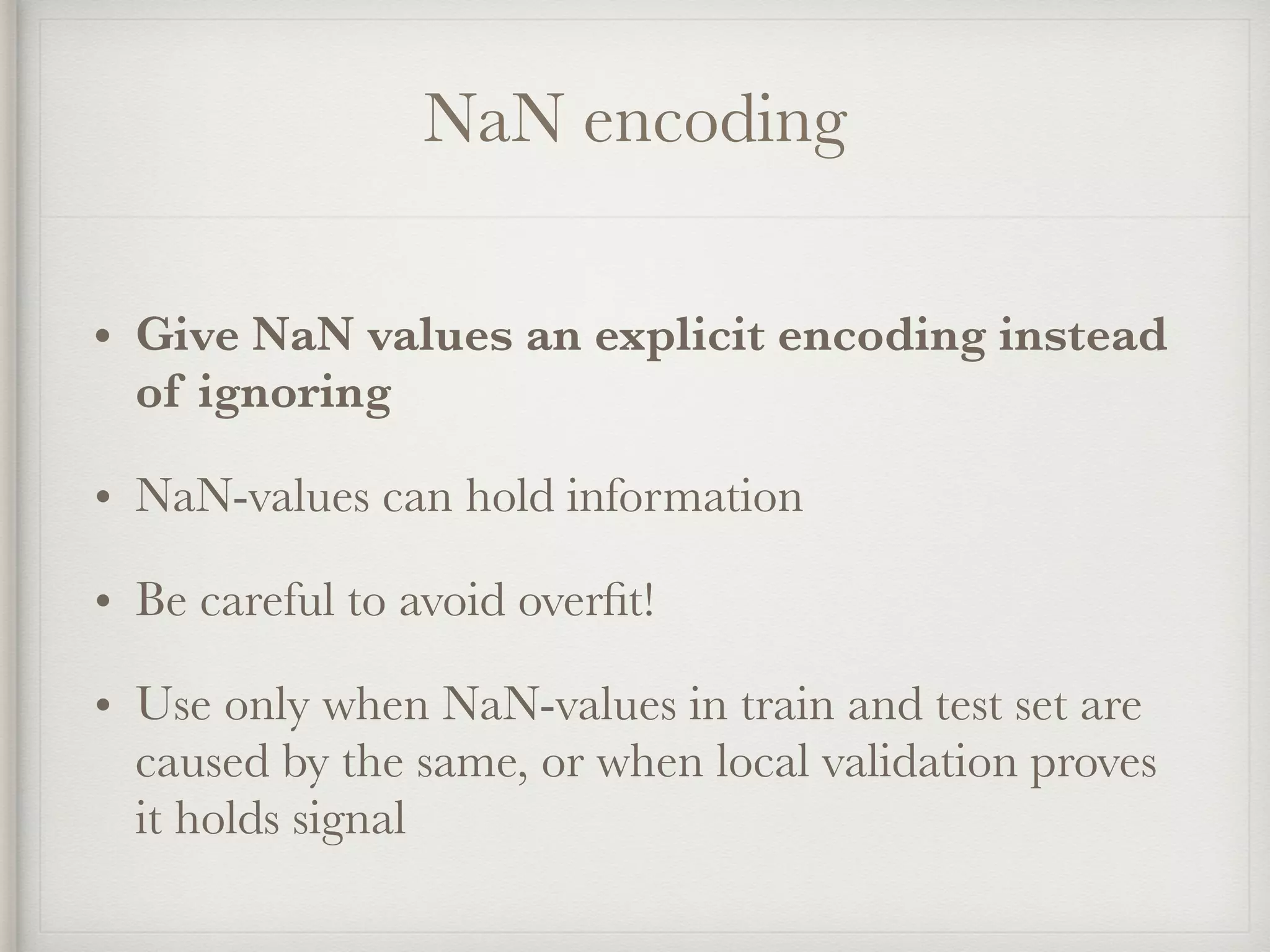
![NaN encoding
Sample = [NaN]
UA UA=mobile UA=tablet UA=NaN
------- --------- --------- ------
mobile 0 0 1
tablet
mobile =>
NaN
mobile
Encoded = [0, 0, 1]](https://image.slidesharecdn.com/feature-engineering-ml-meetup2-170220185754/75/Feature-Engineering-20-2048.jpg)
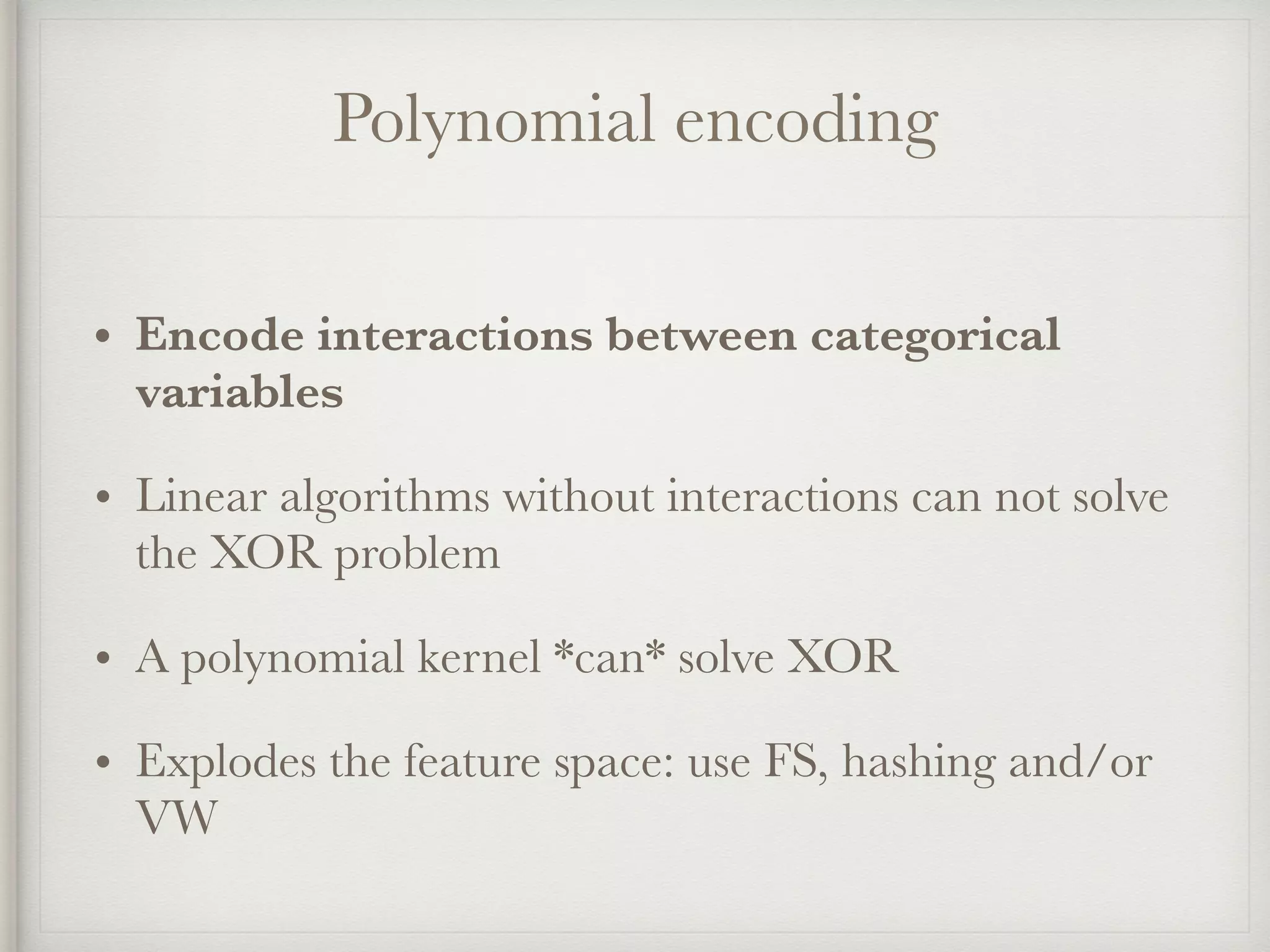
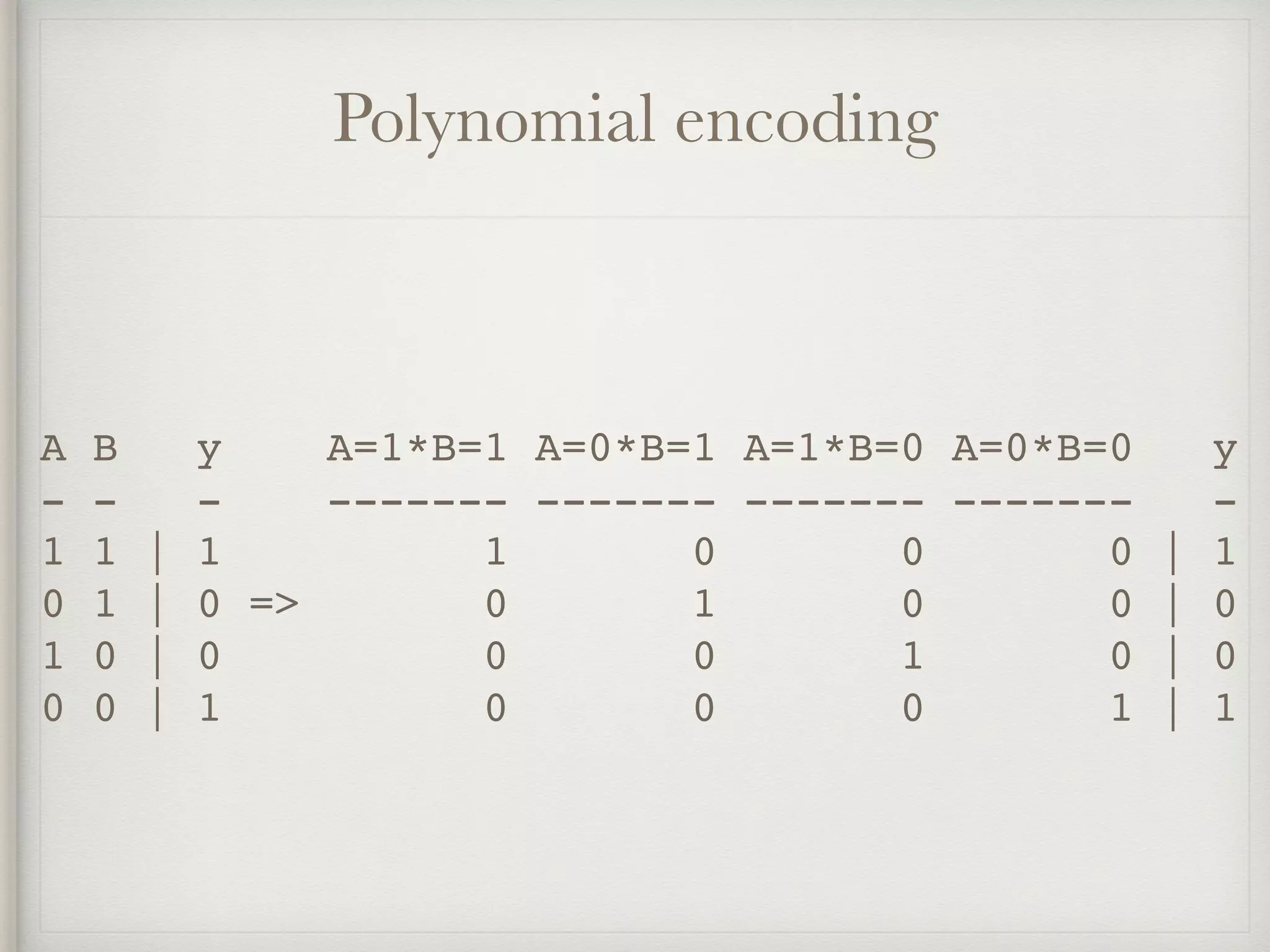

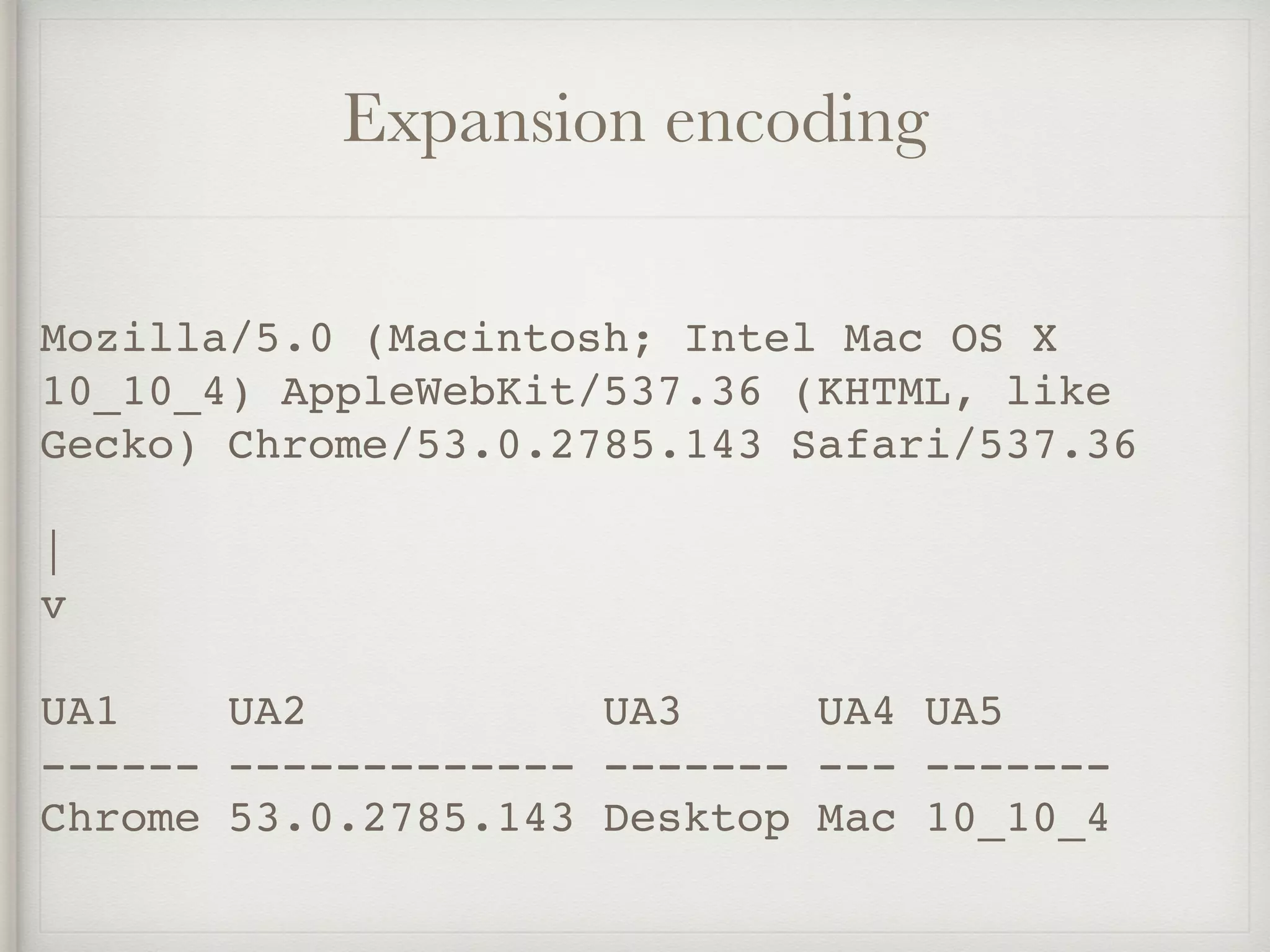
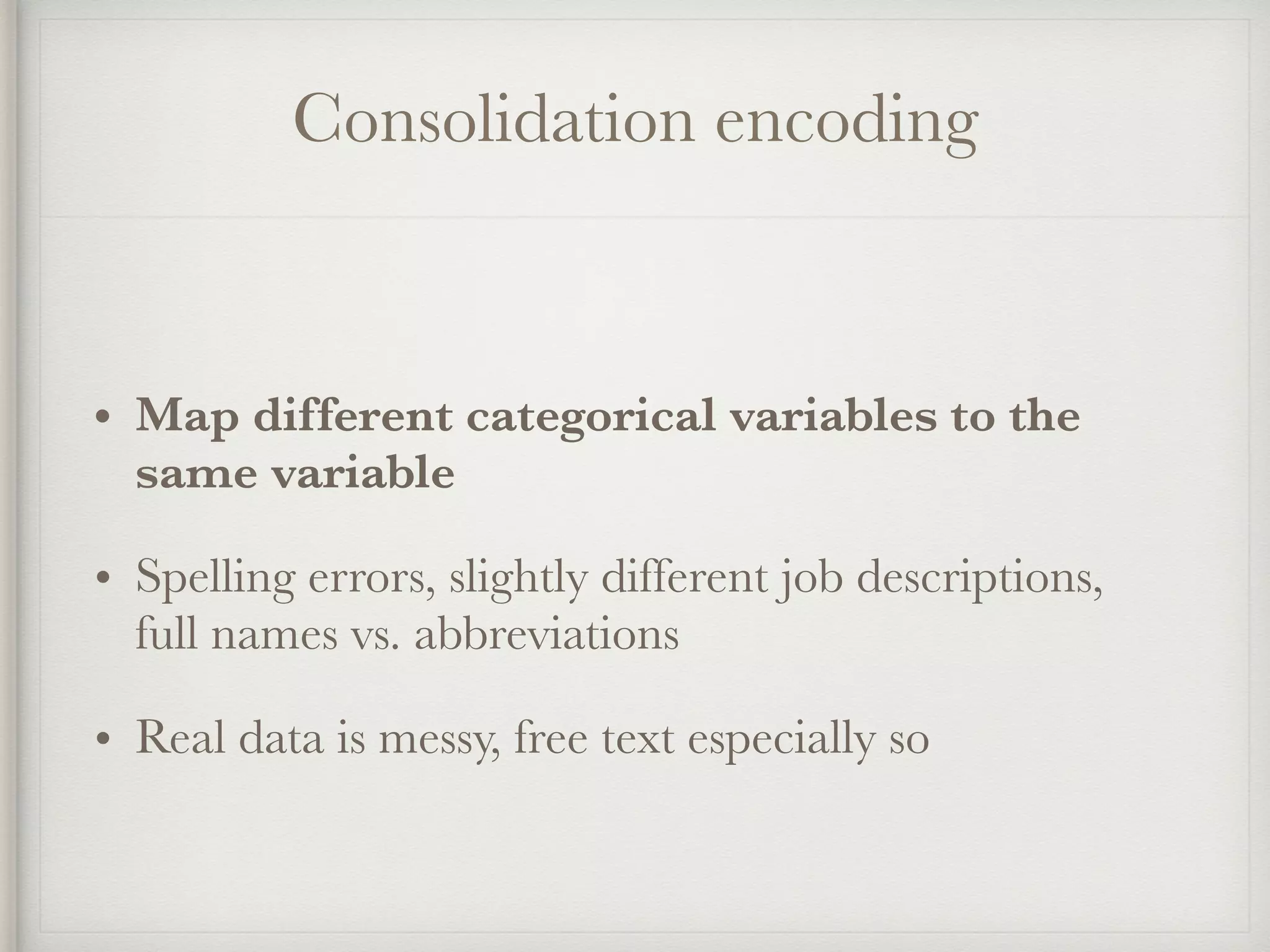
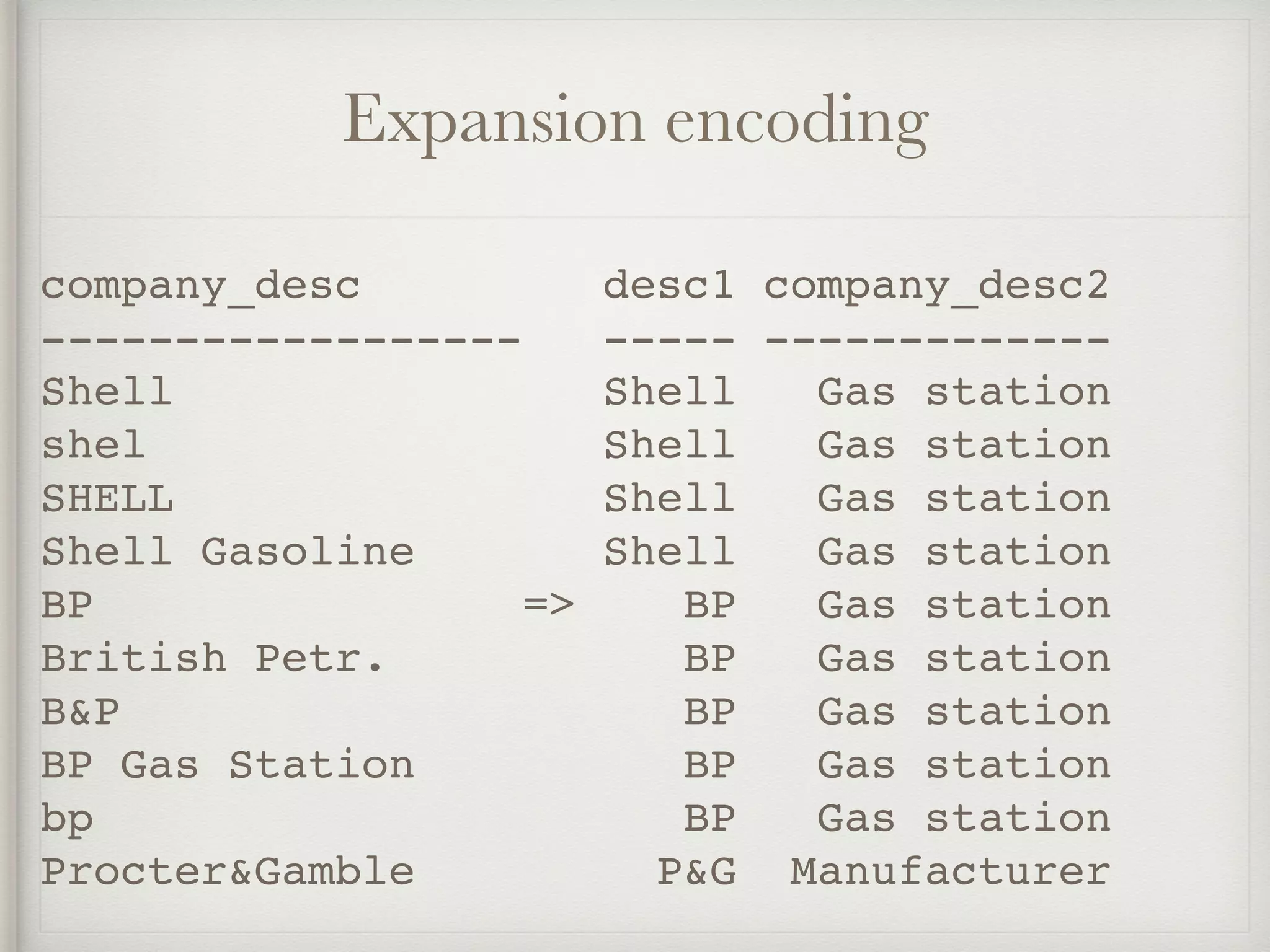
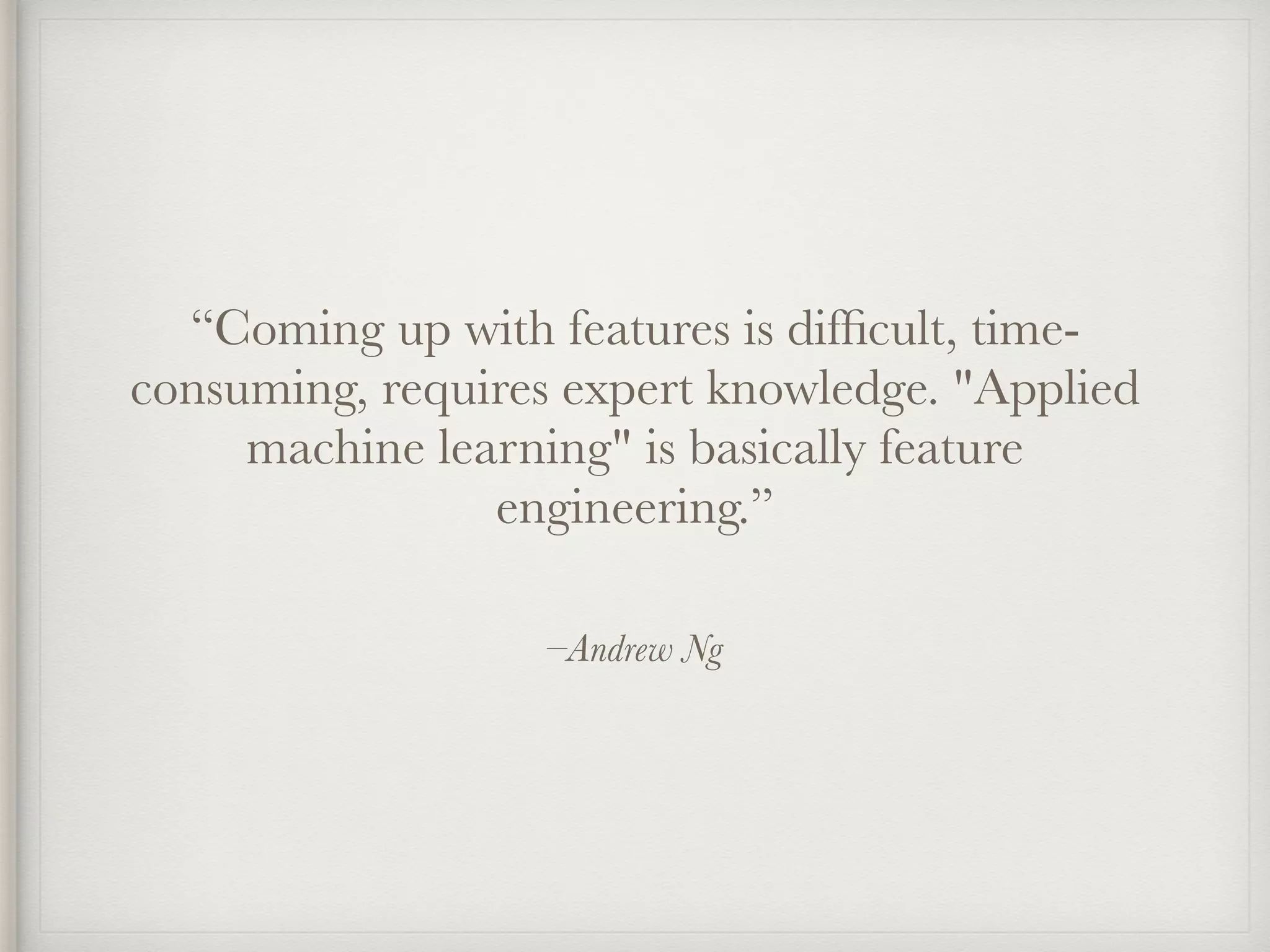
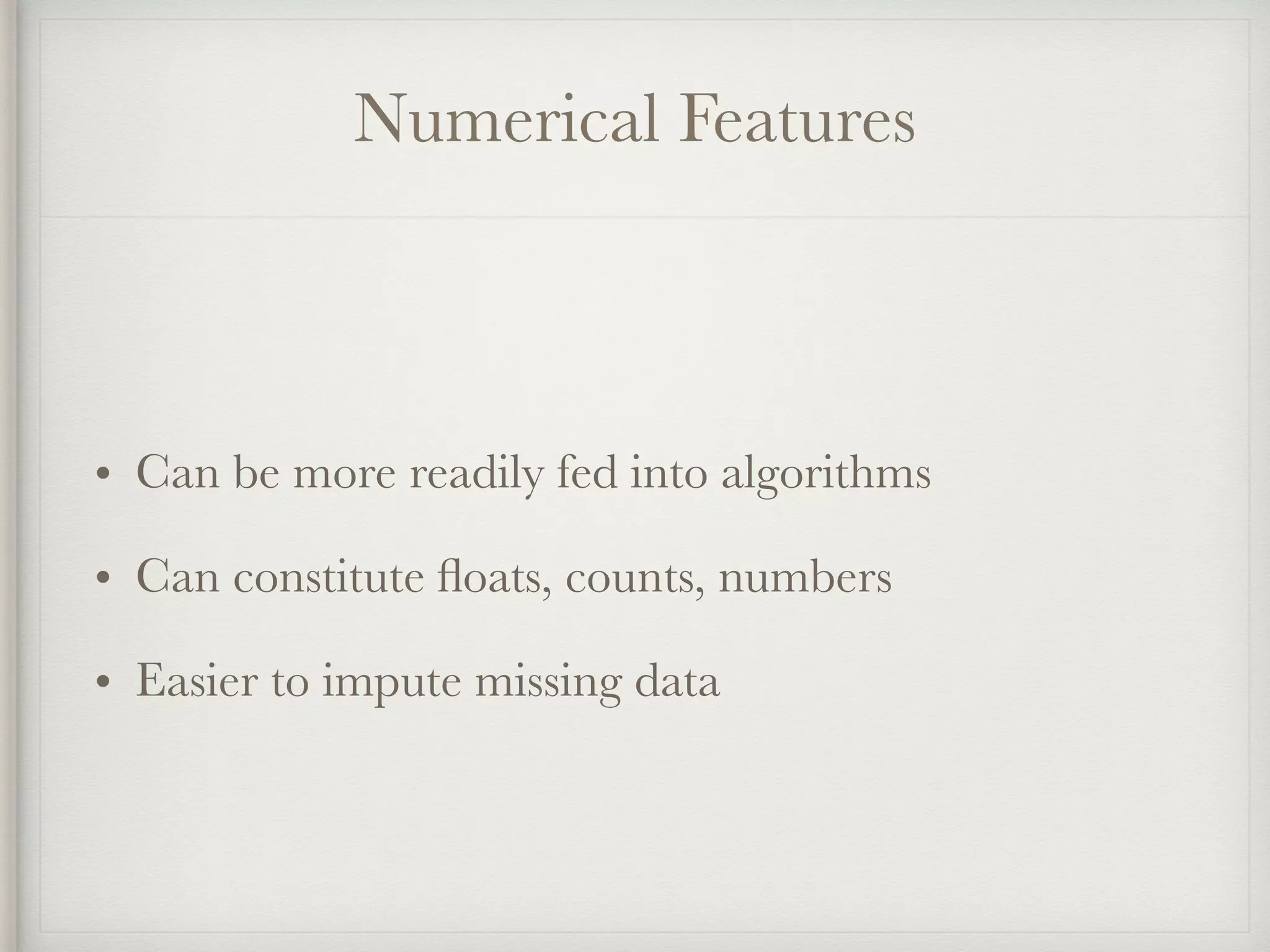

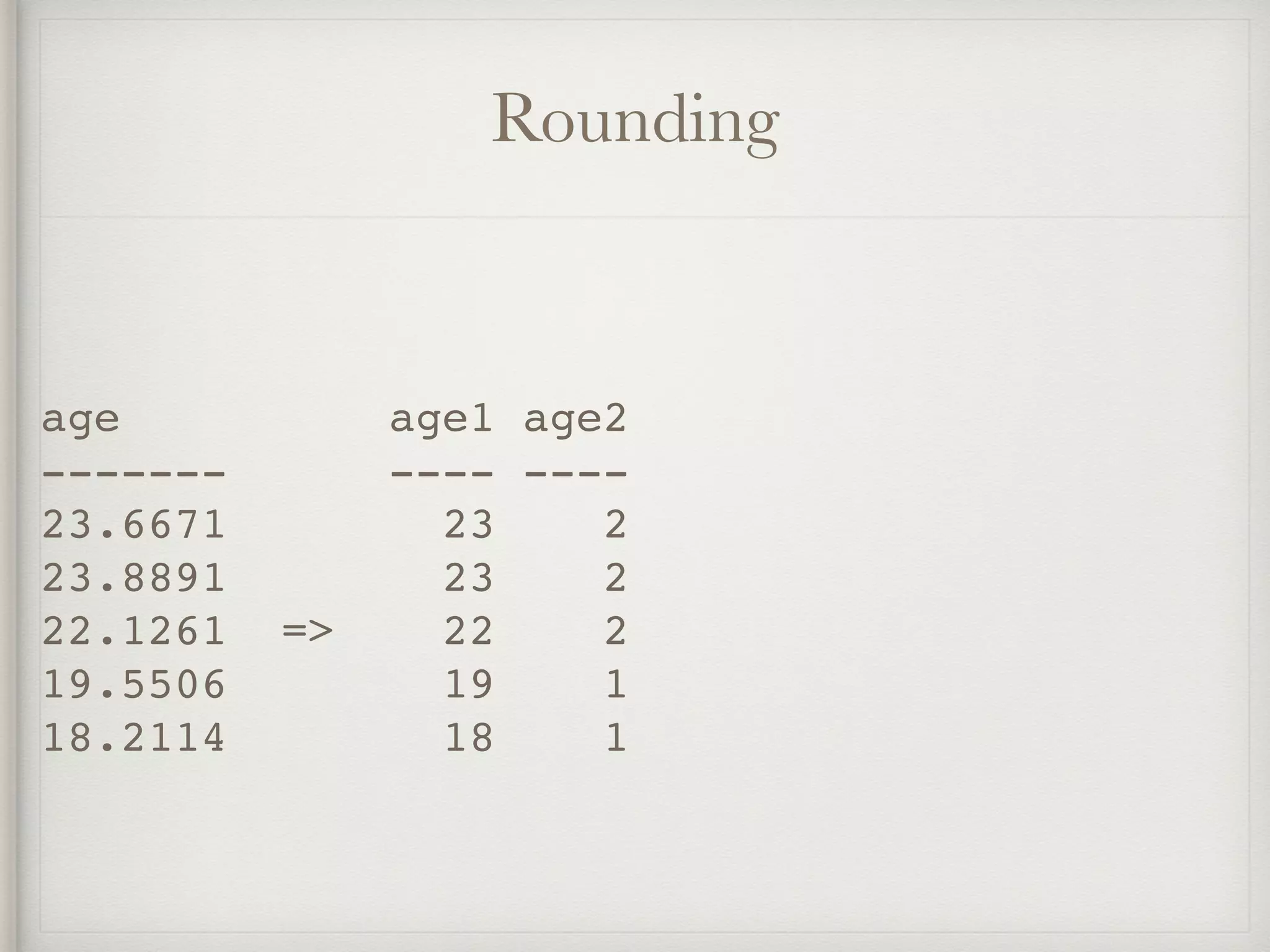
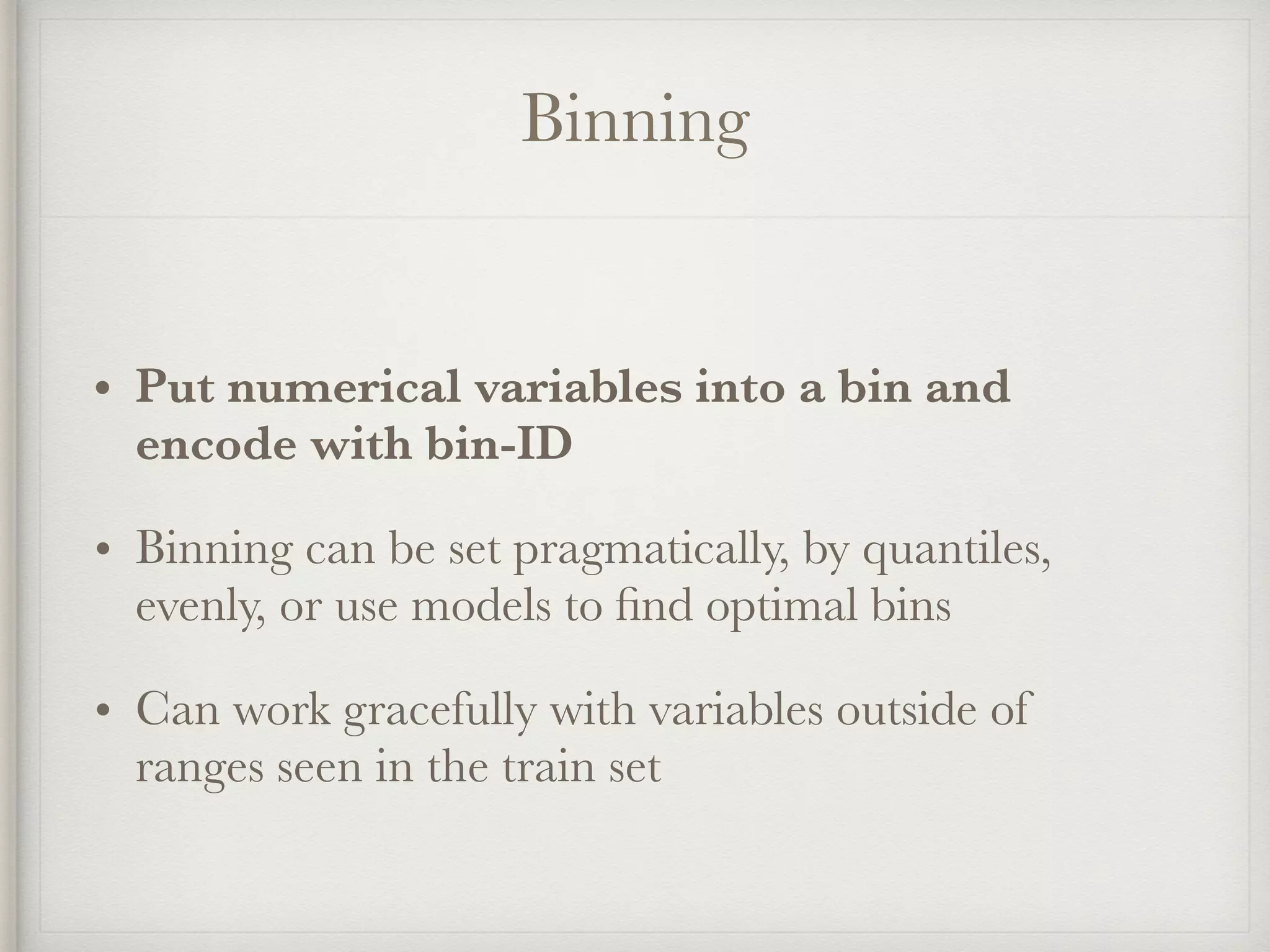
![Binning
risk_score rs[-inf,33] rs[33,66] rs[66,inf]
---------- ----------- --------- ----------
15 1 0 0
77 0 0 1
78 => 0 0 1
55 0 1 0
42 0 1 0](https://image.slidesharecdn.com/feature-engineering-ml-meetup2-170220185754/75/Feature-Engineering-32-2048.jpg)
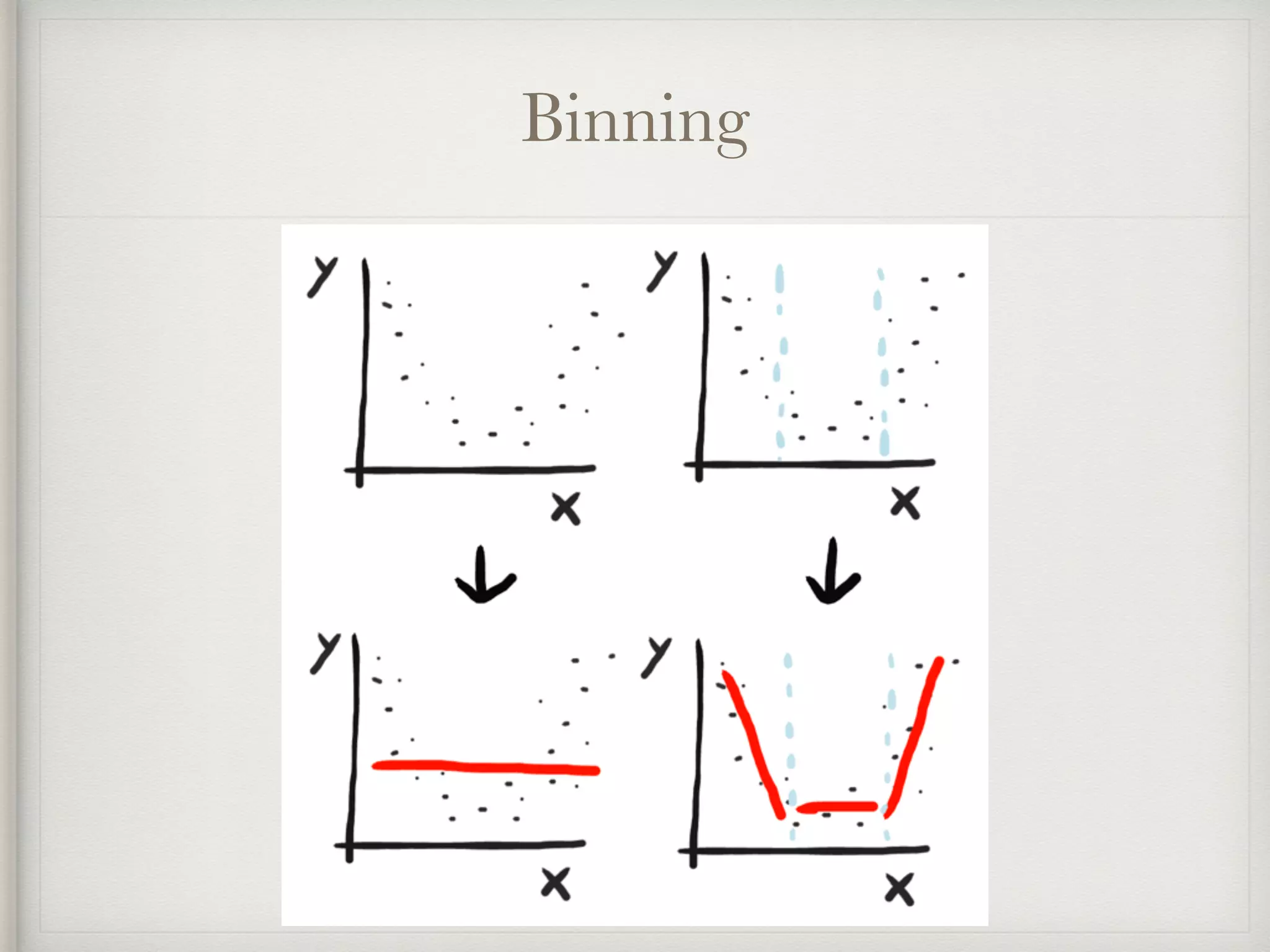
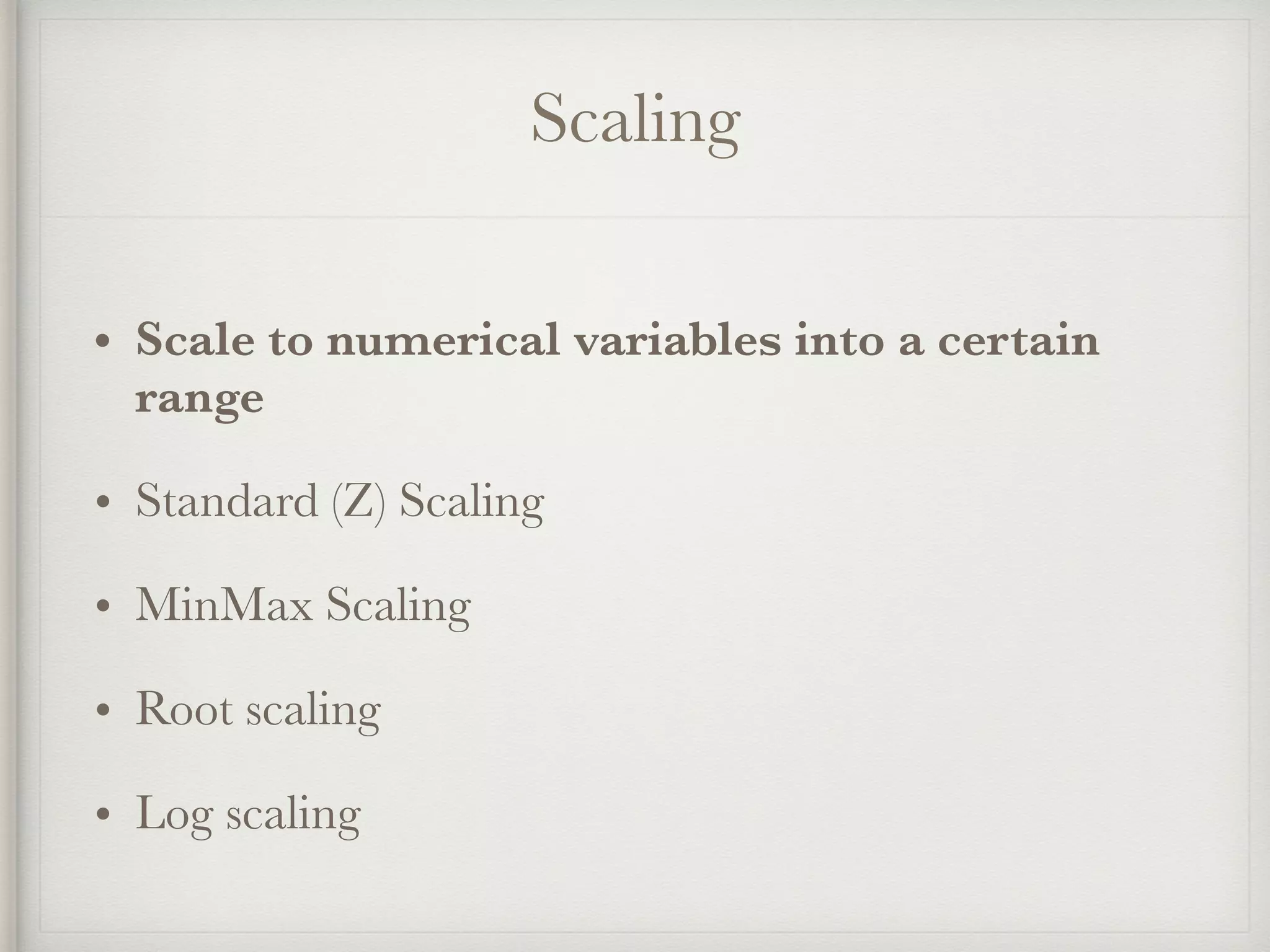
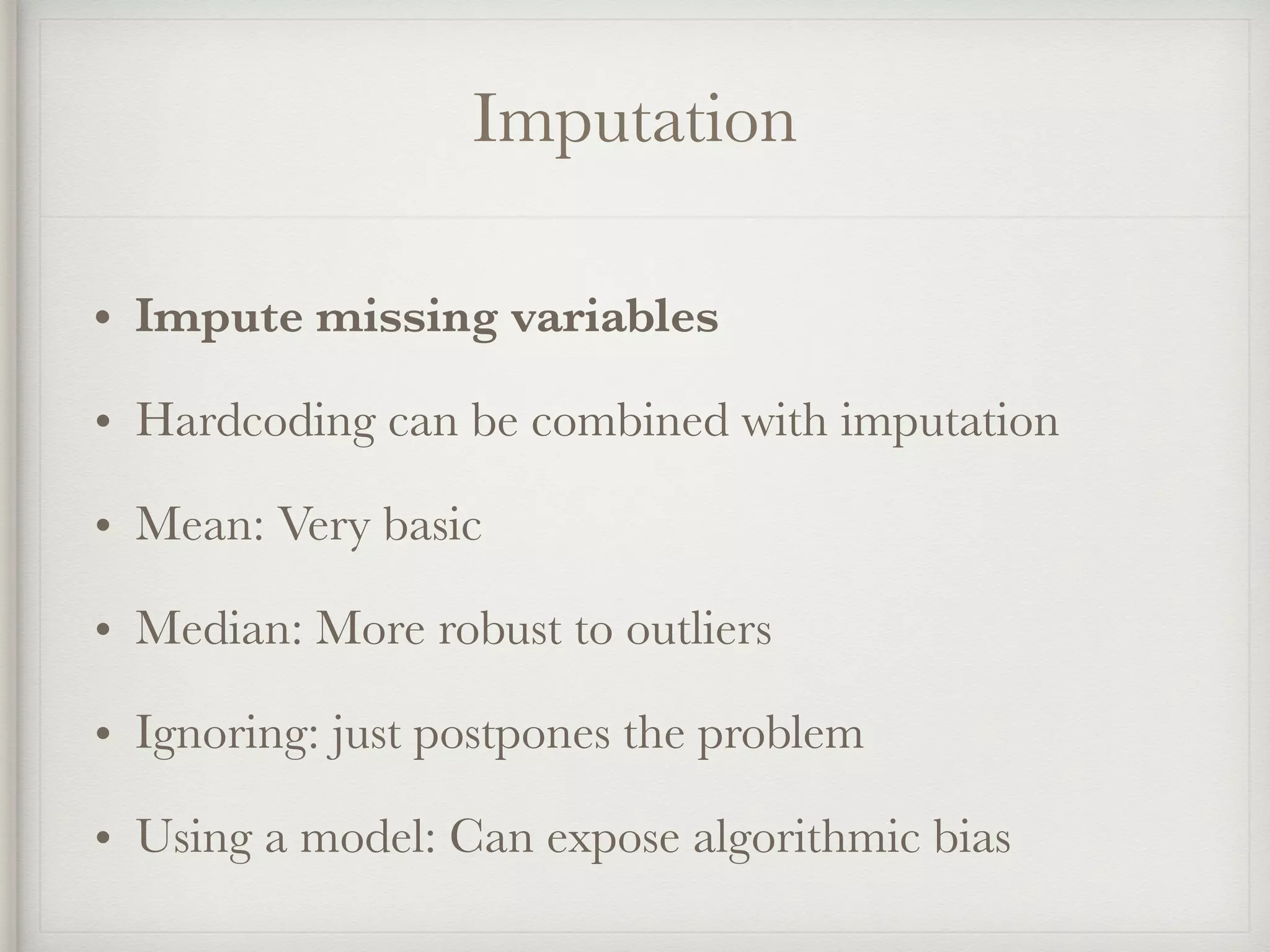
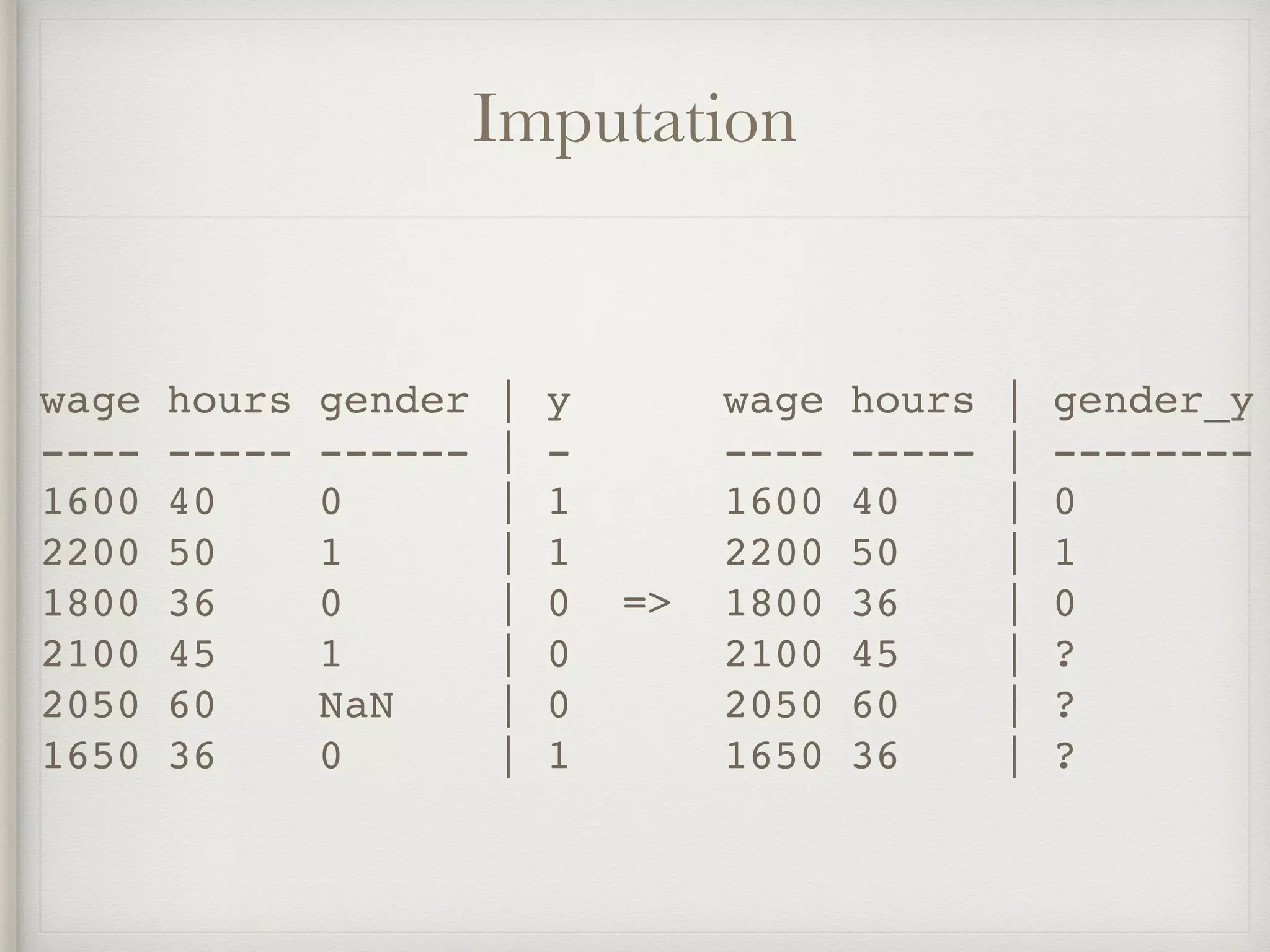
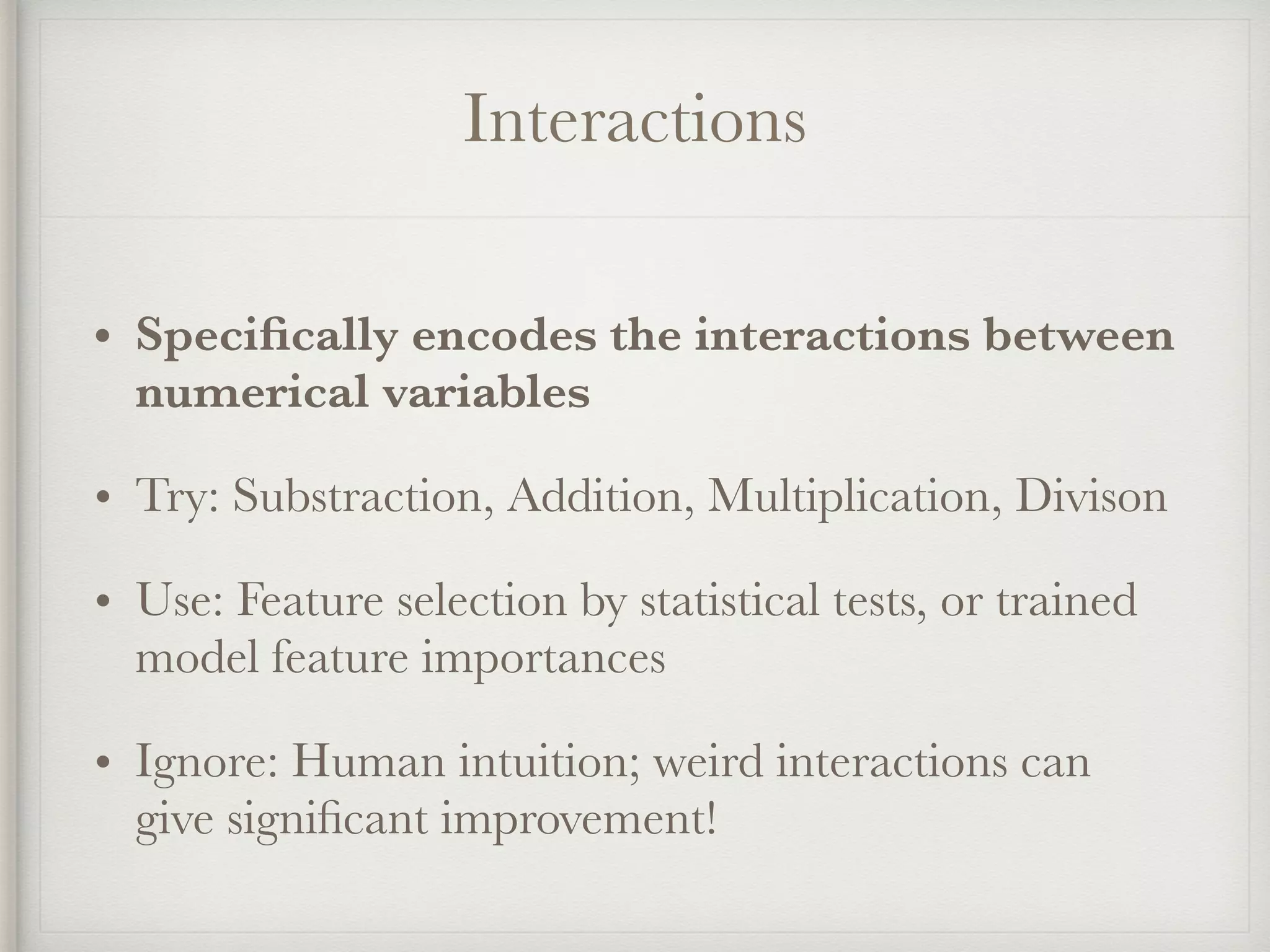
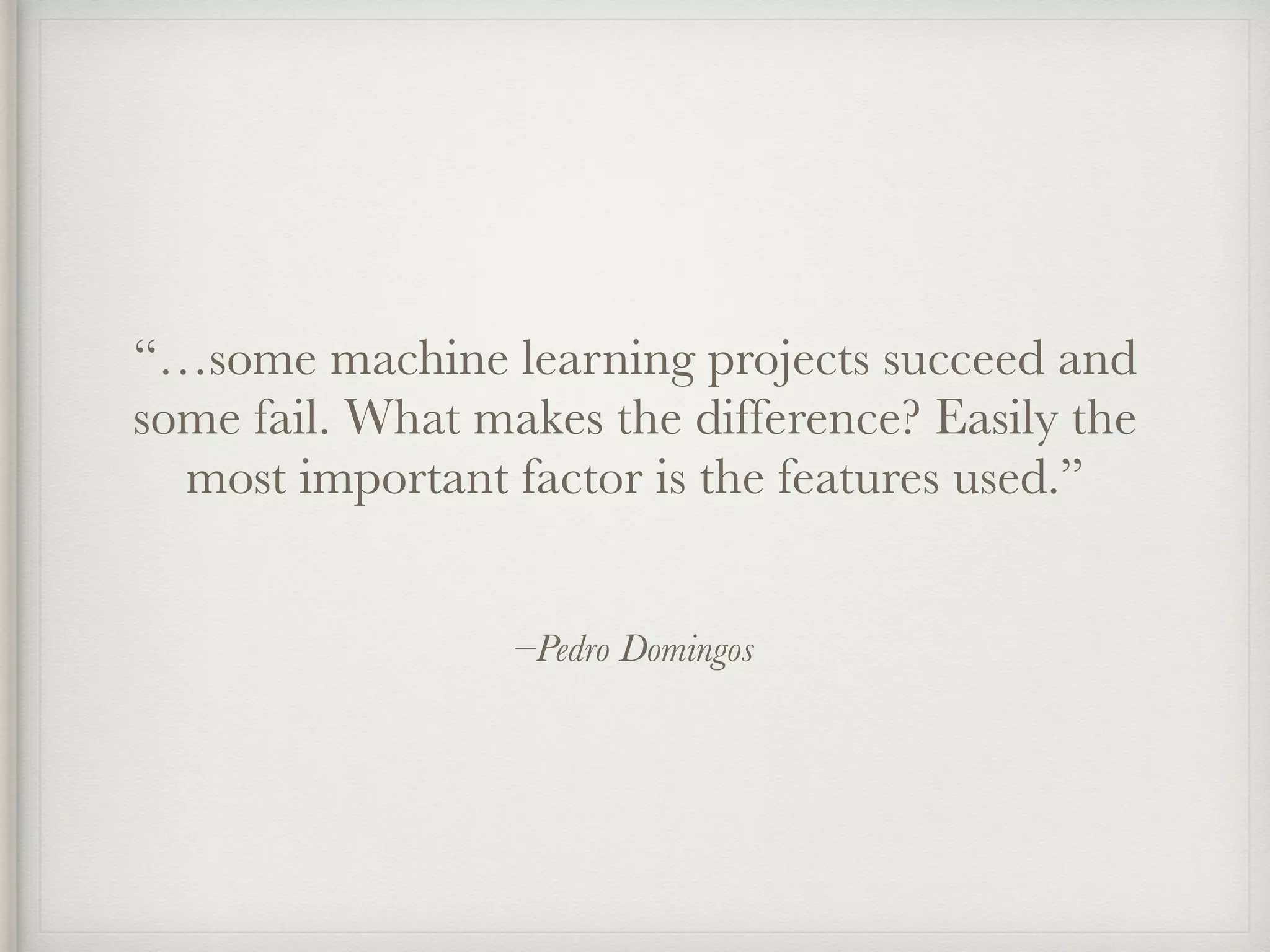
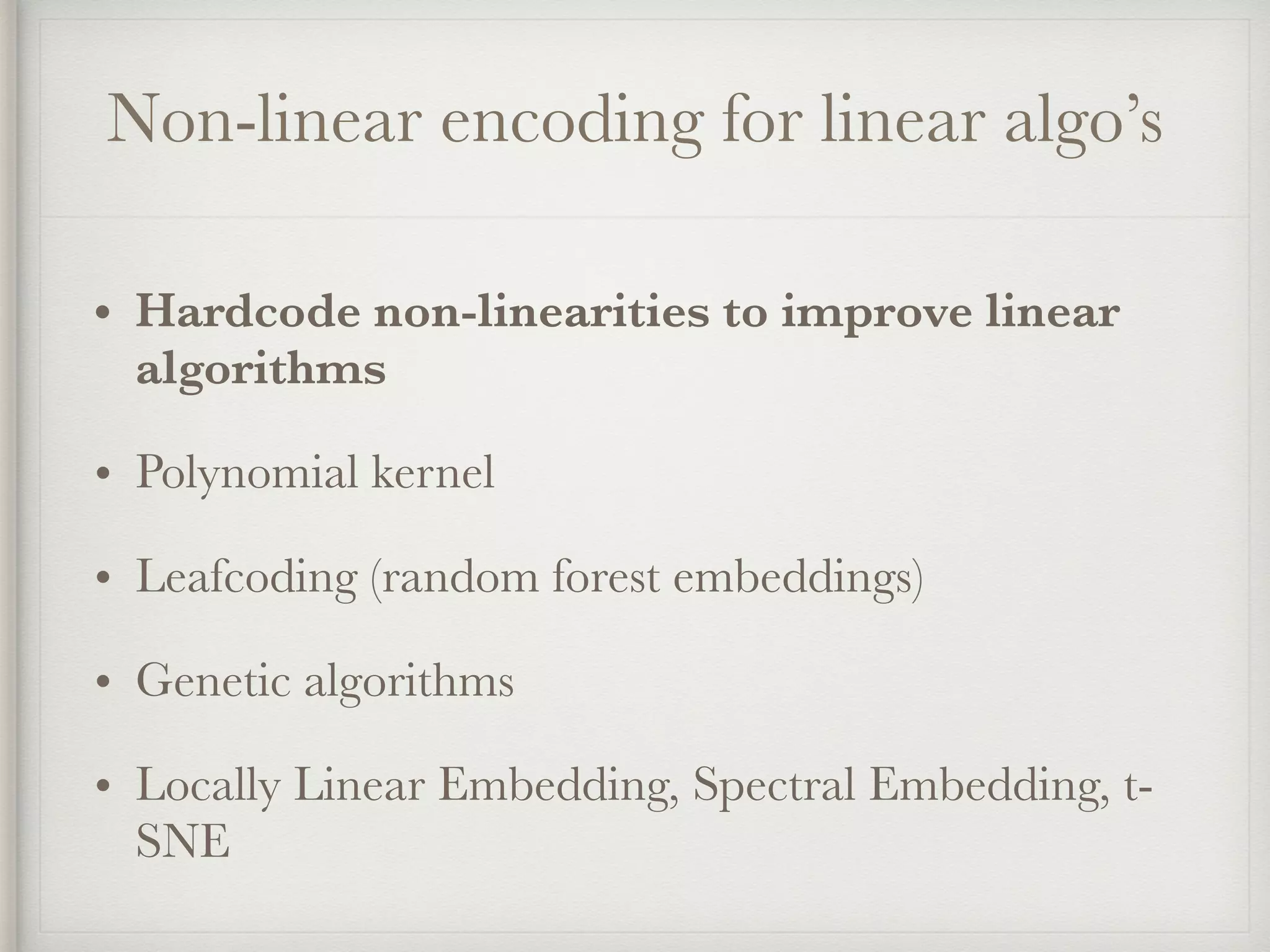
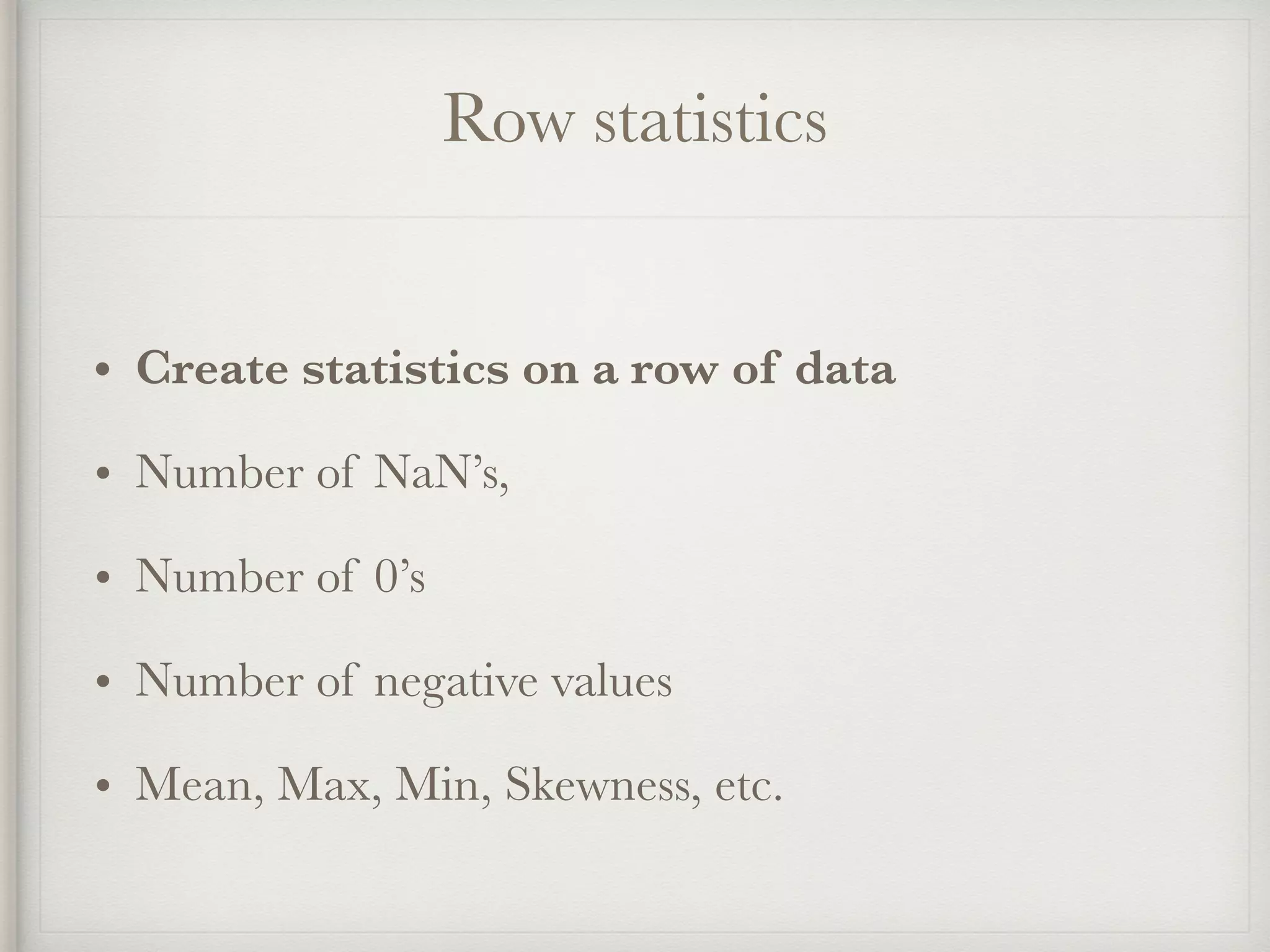
![Xavier Conort
“The algorithms we used are very standard for
Kagglers. […] We spent most of our efforts in
feature engineering. [...] We were also very
careful to discard features likely to expose us to
the risk of over-fitting our model.”](https://image.slidesharecdn.com/feature-engineering-ml-meetup2-170220185754/75/Feature-Engineering-41-2048.jpg)
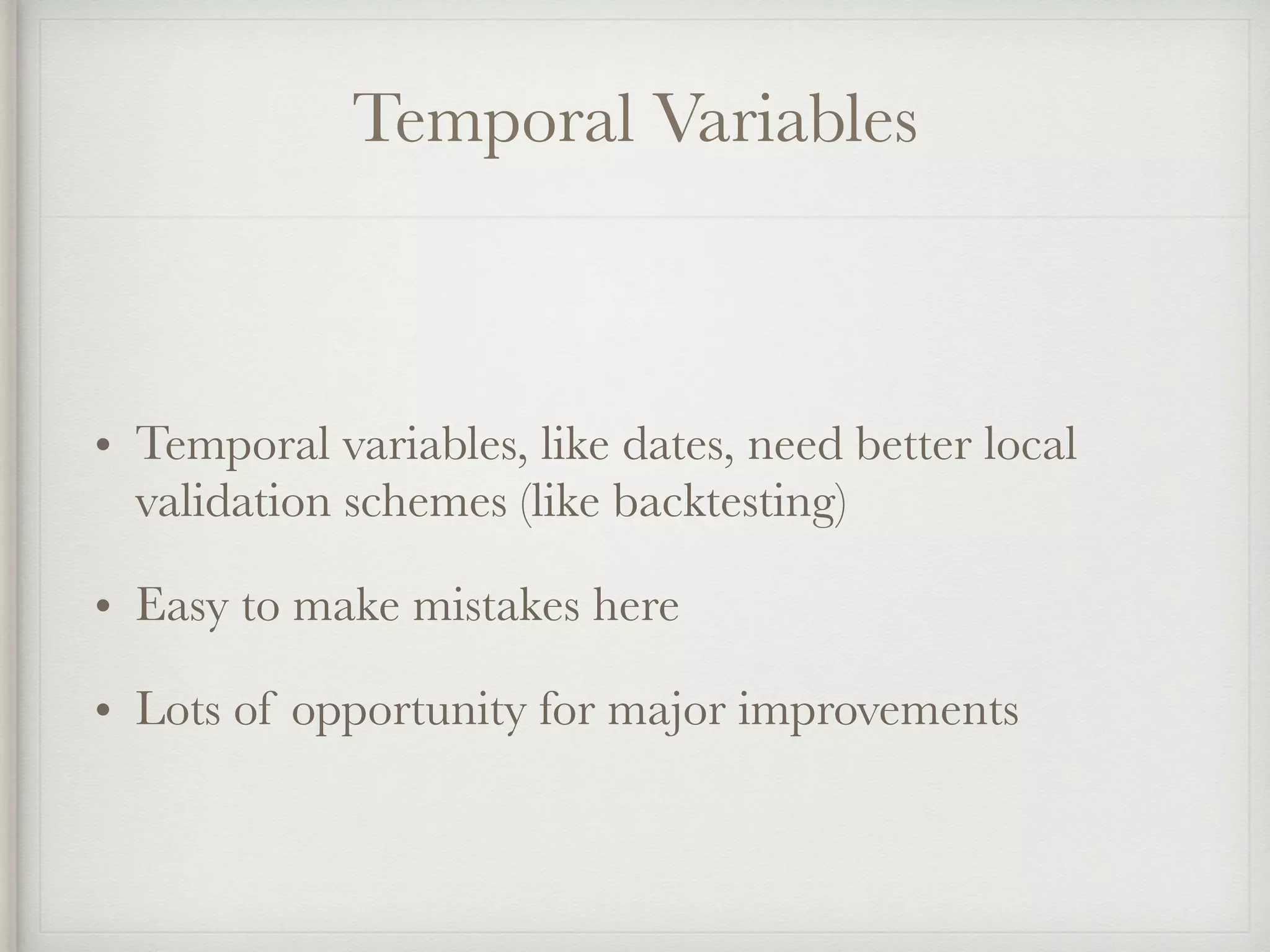
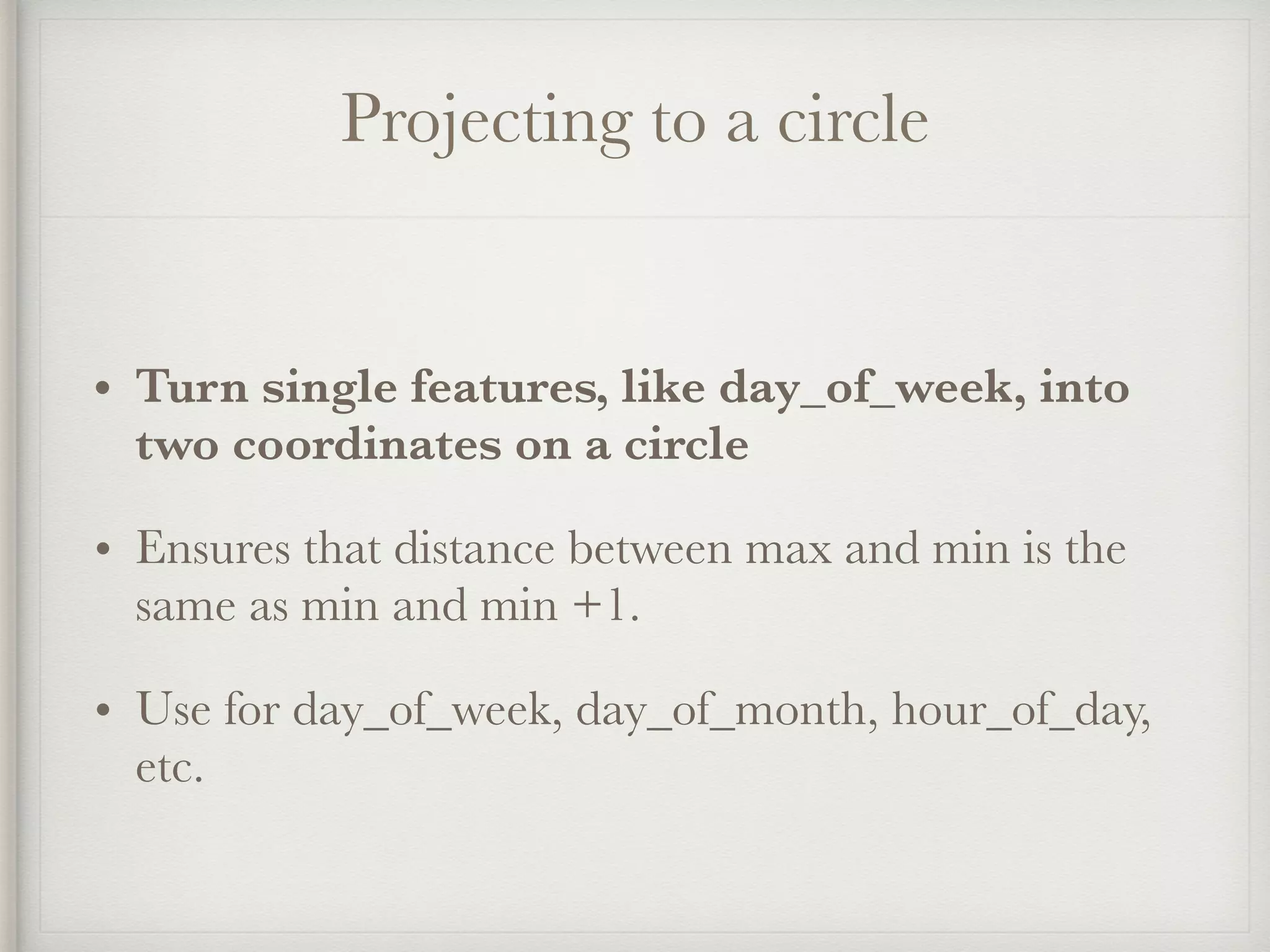
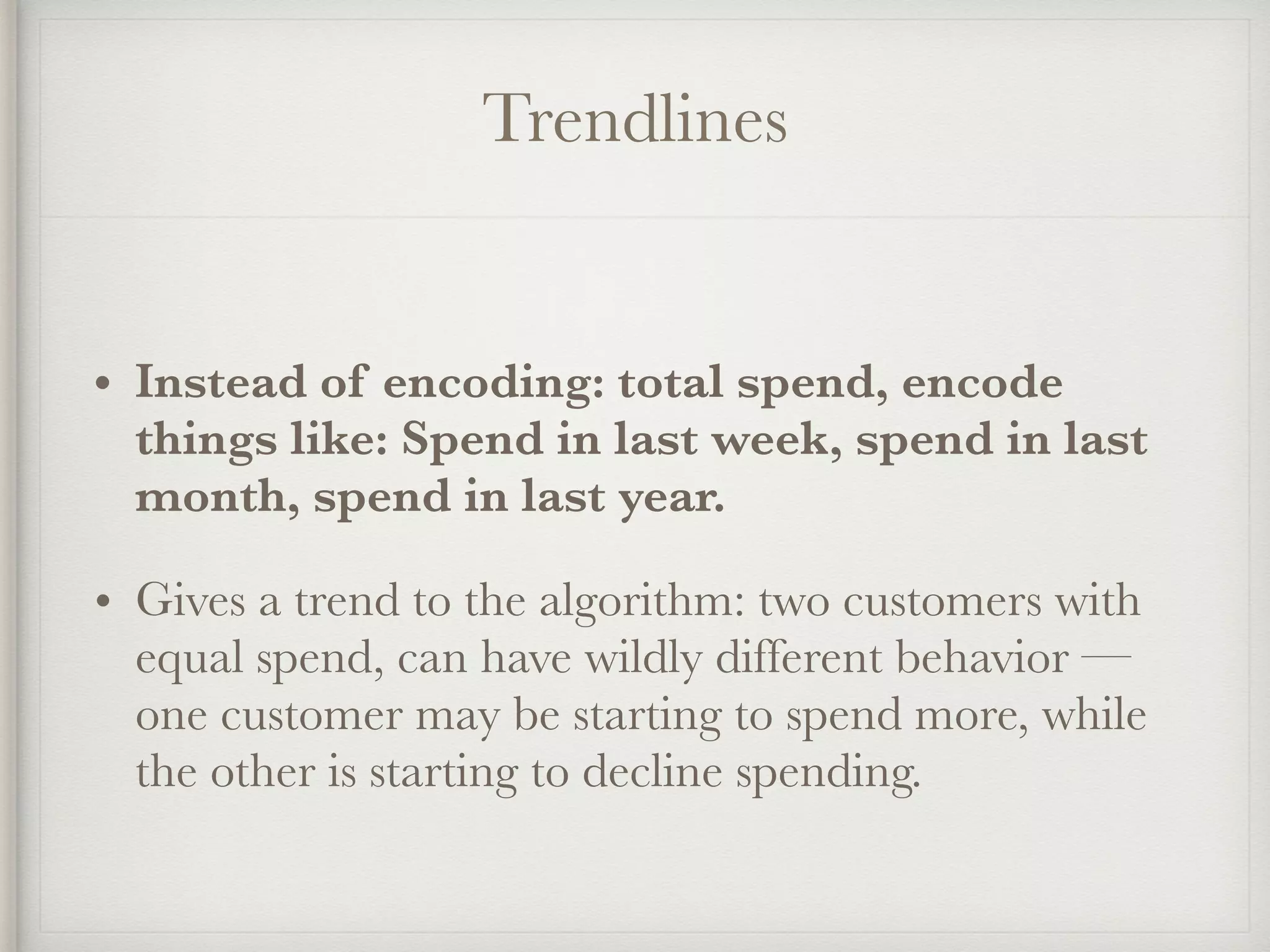
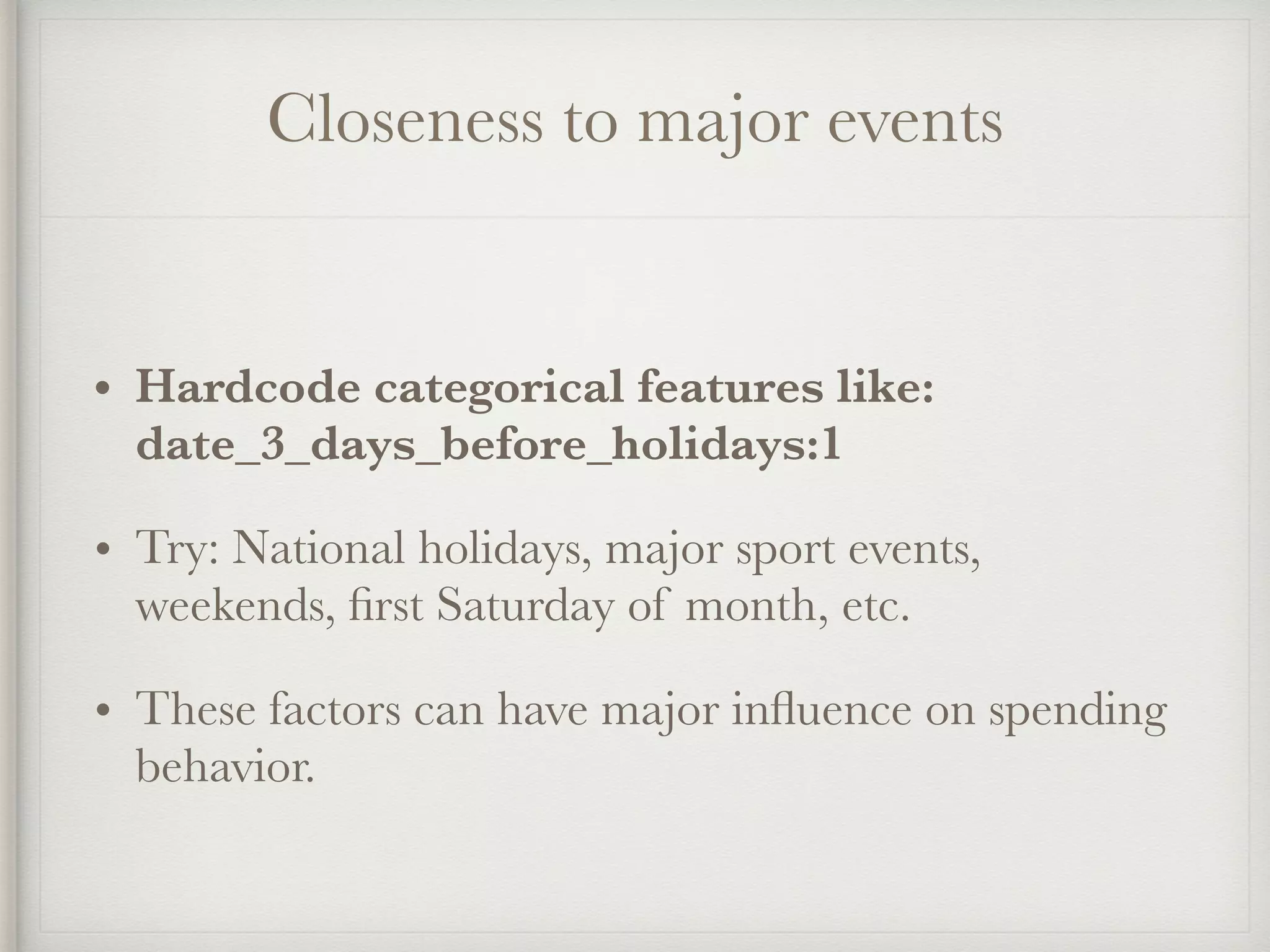
![Scott Locklin
“feature engineering is another topic which
doesn’t seem to merit any review papers or
books, or even chapters in books, but it is
absolutely vital to ML success. […] Much of the
success of machine learning is actually success
in engineering features that a learner can
understand.”](https://image.slidesharecdn.com/feature-engineering-ml-meetup2-170220185754/75/Feature-Engineering-46-2048.jpg)
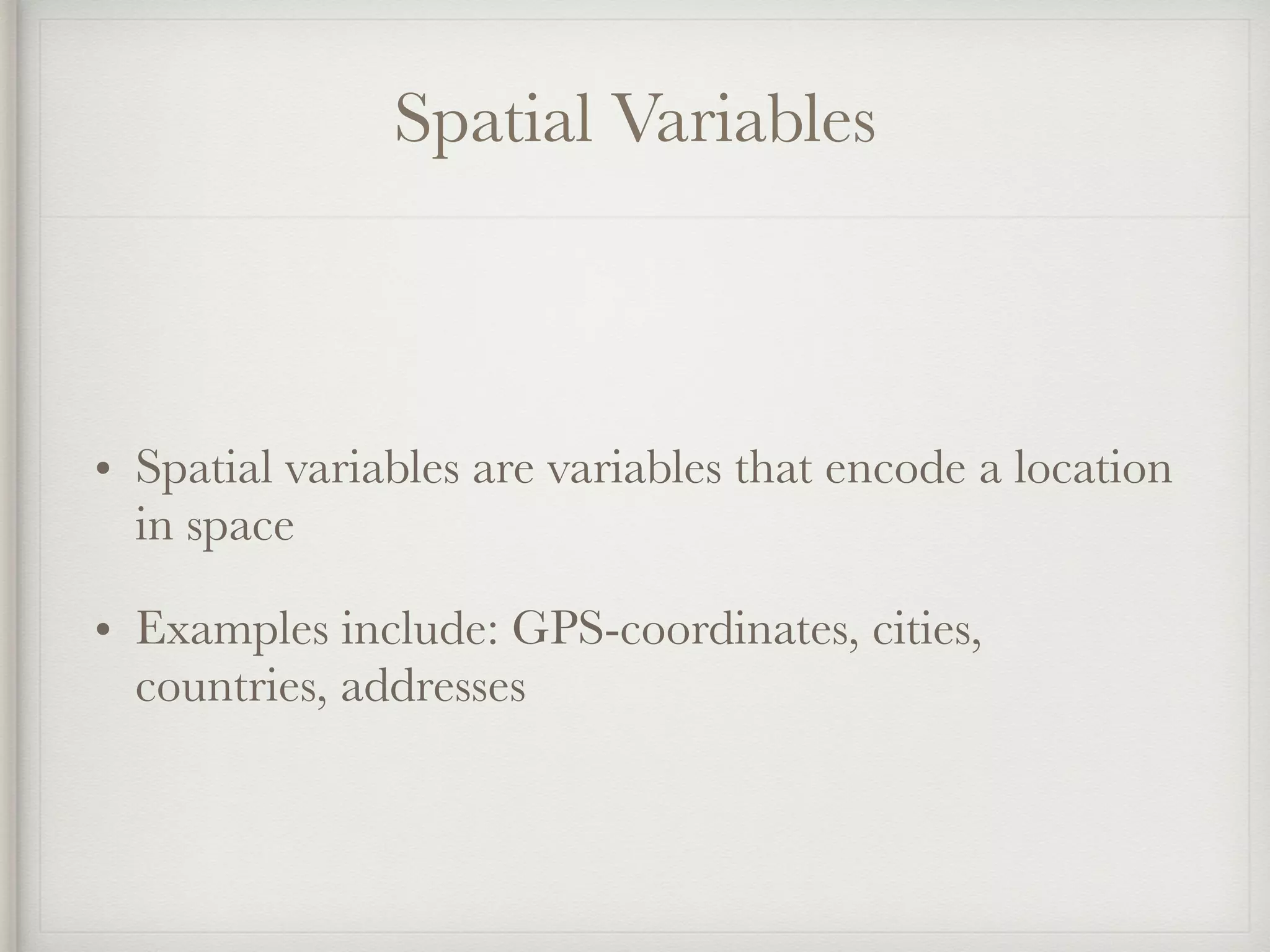
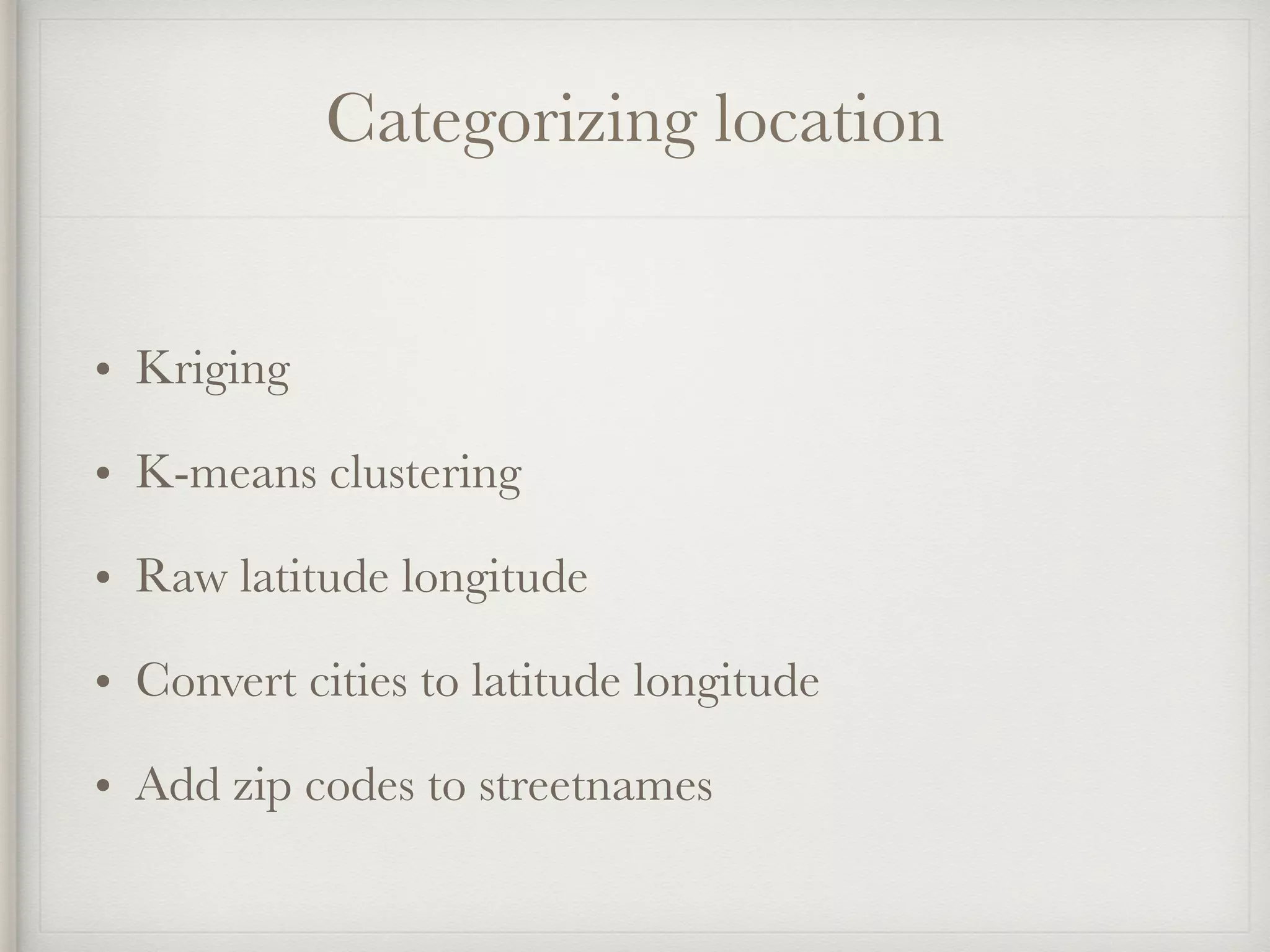
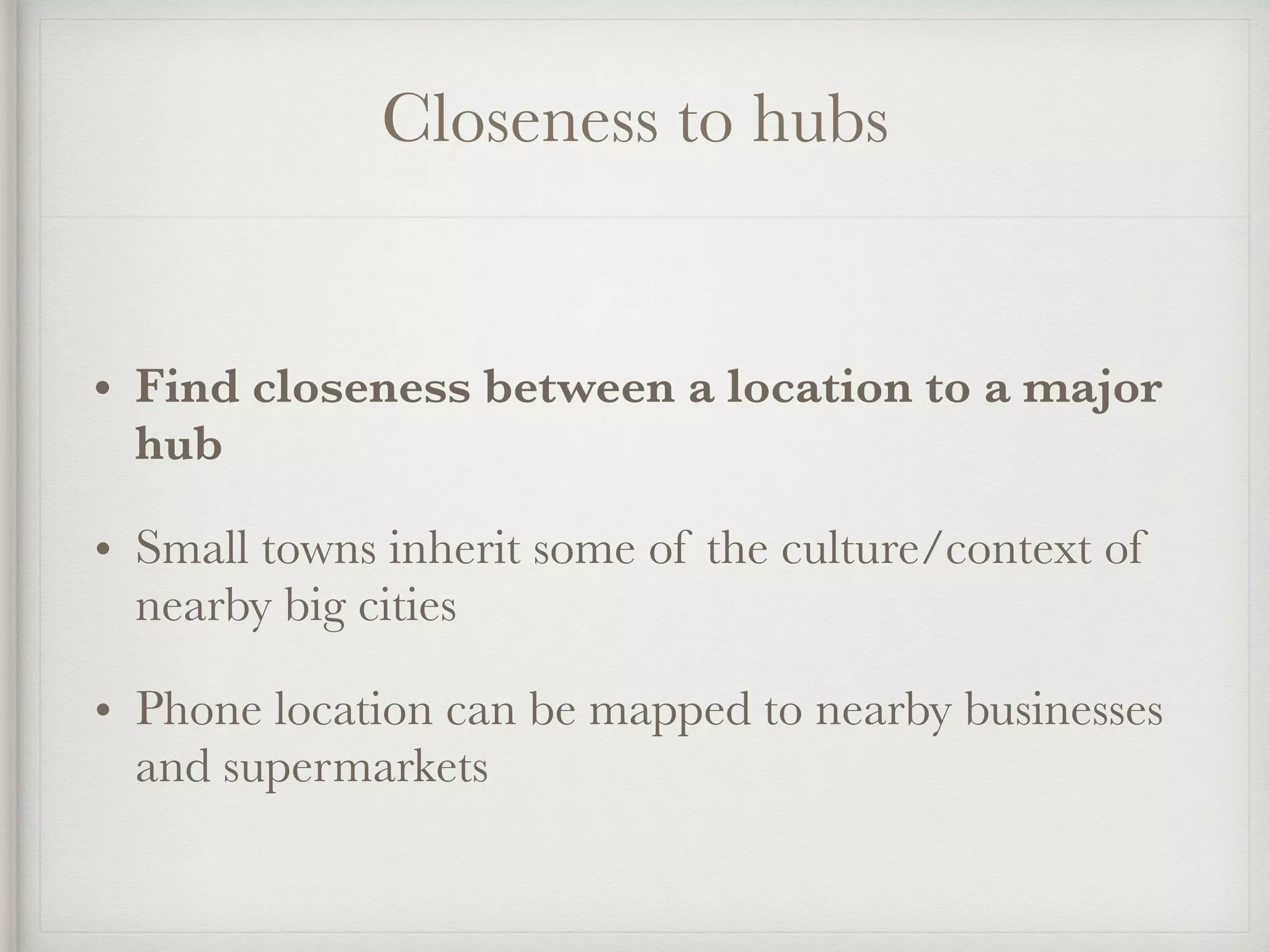
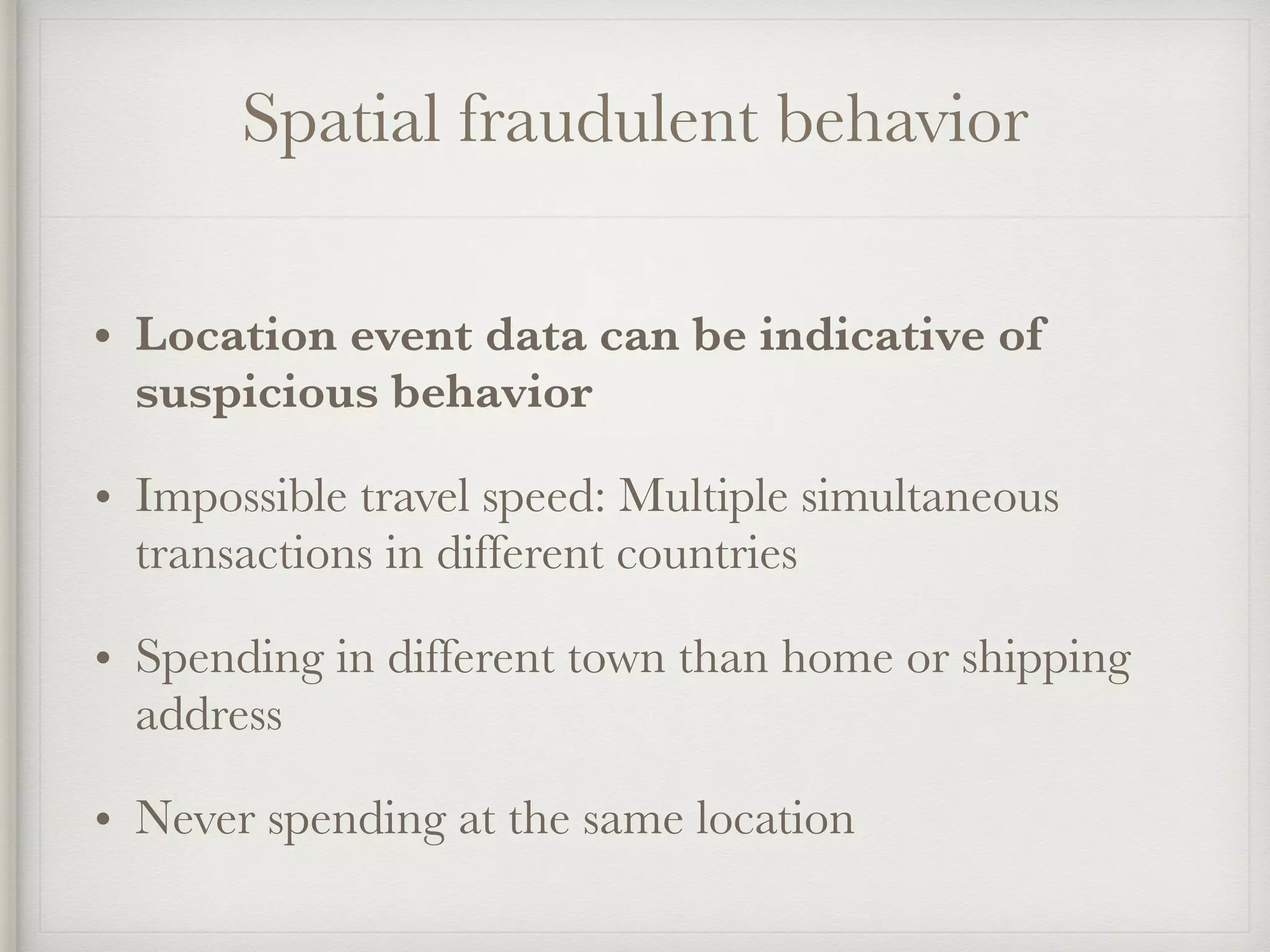
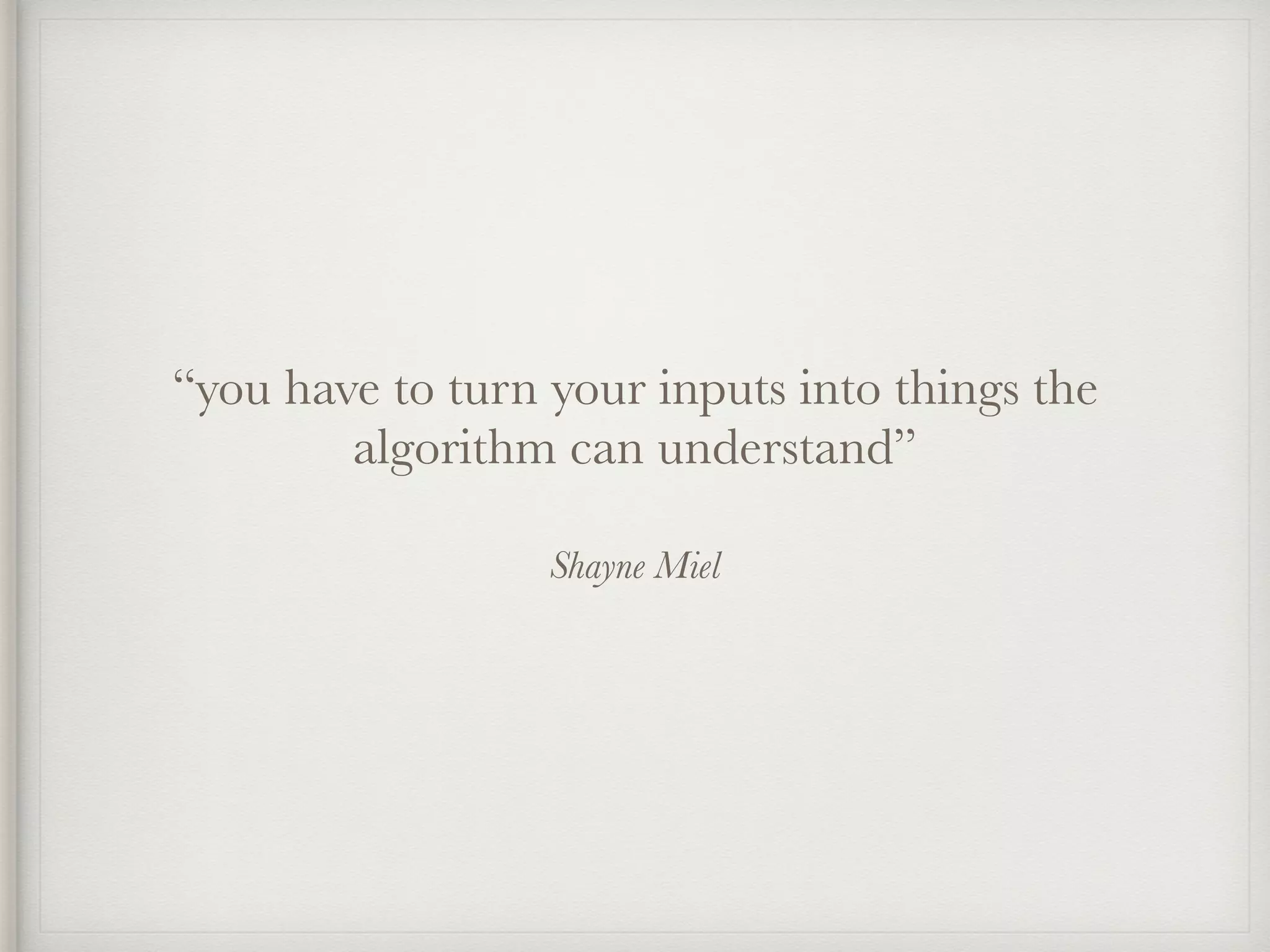
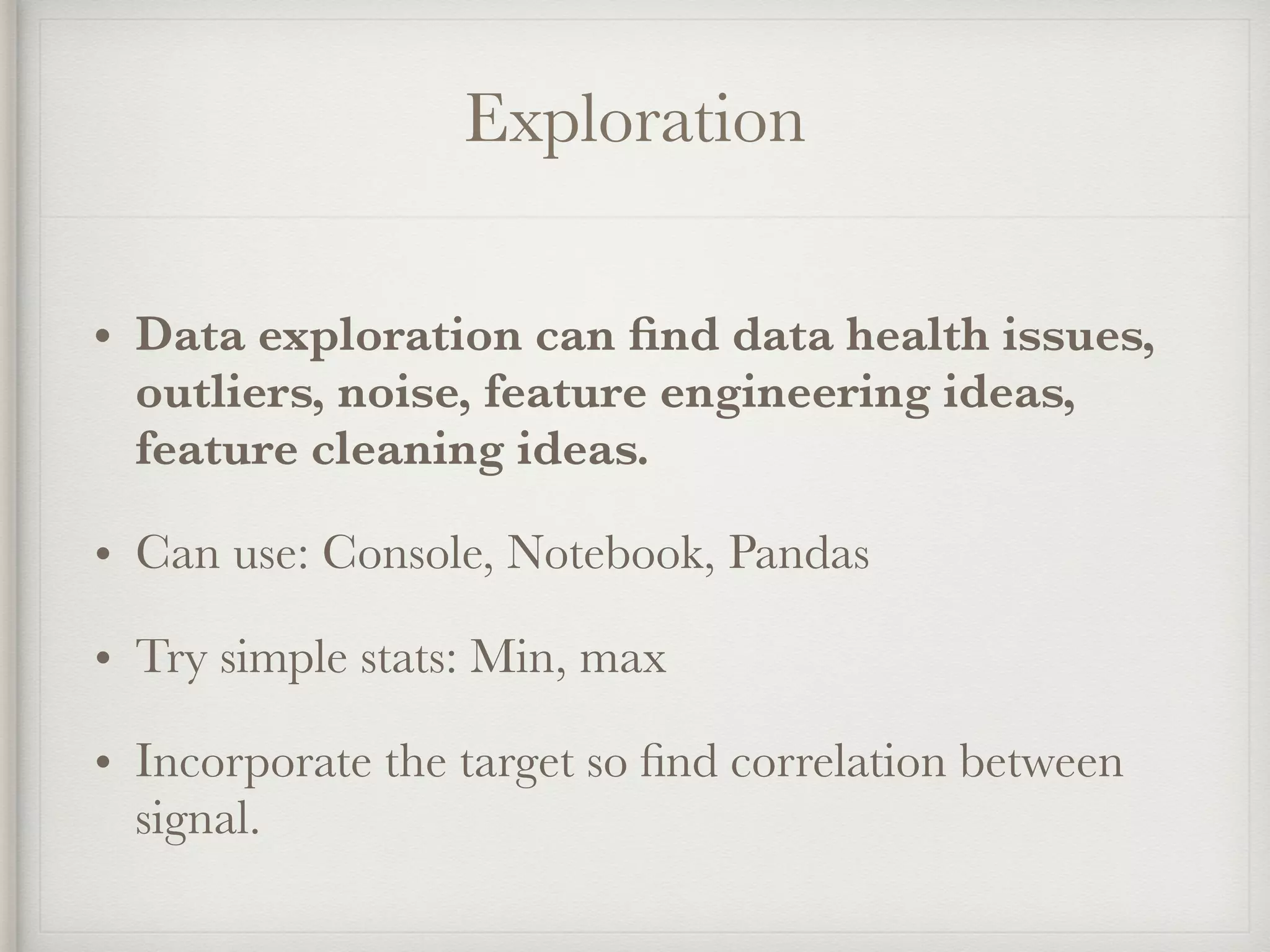
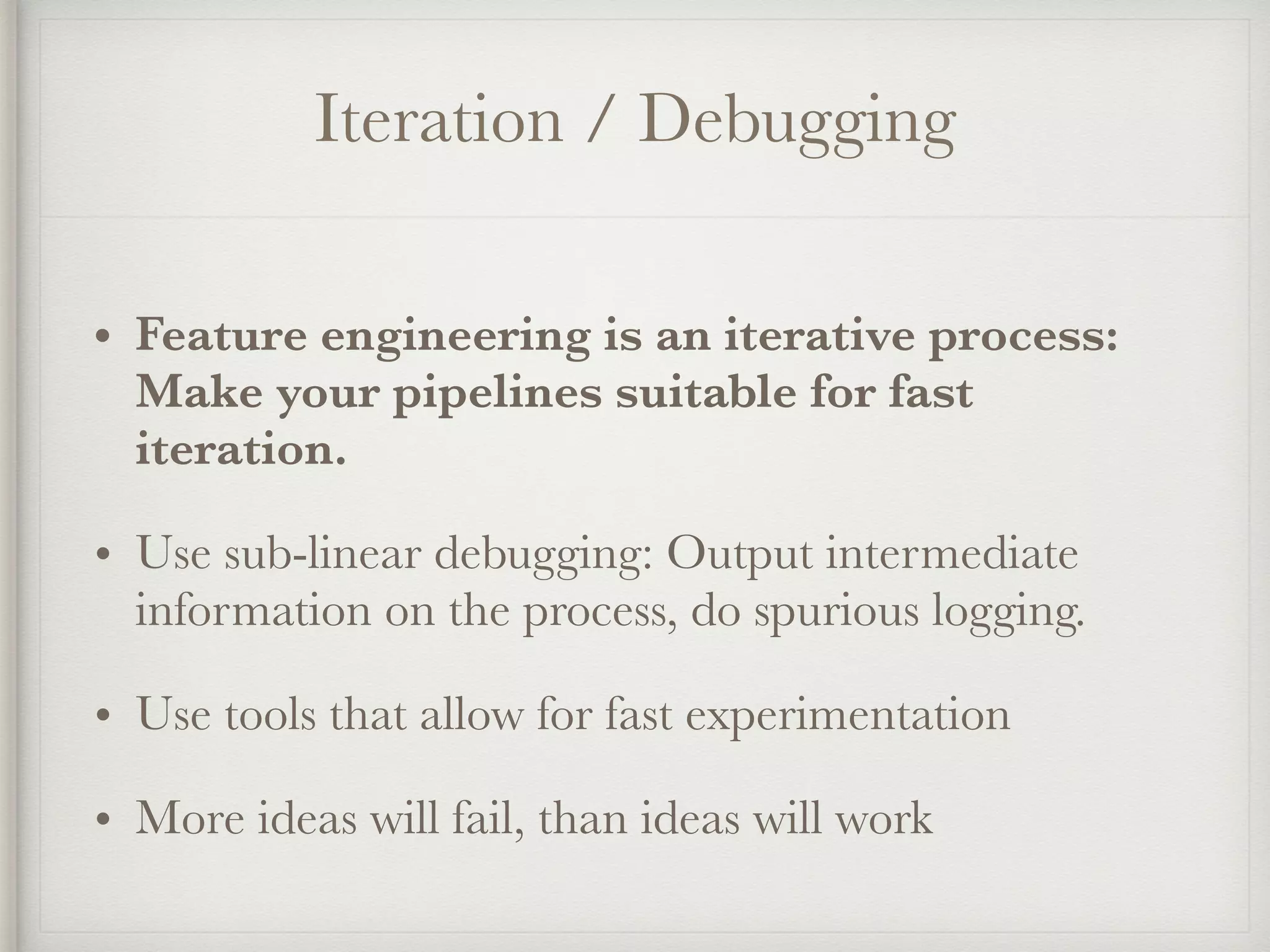


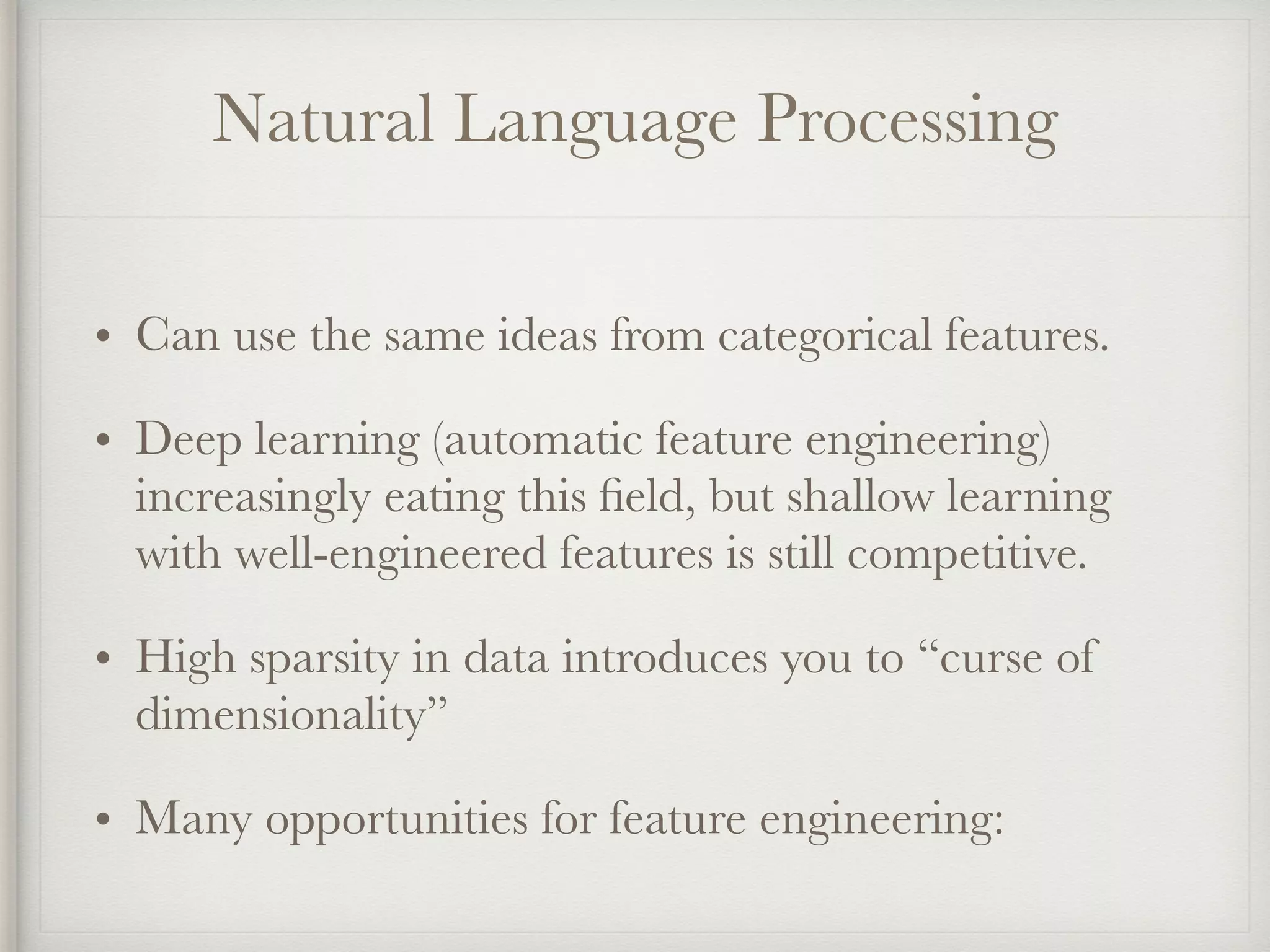
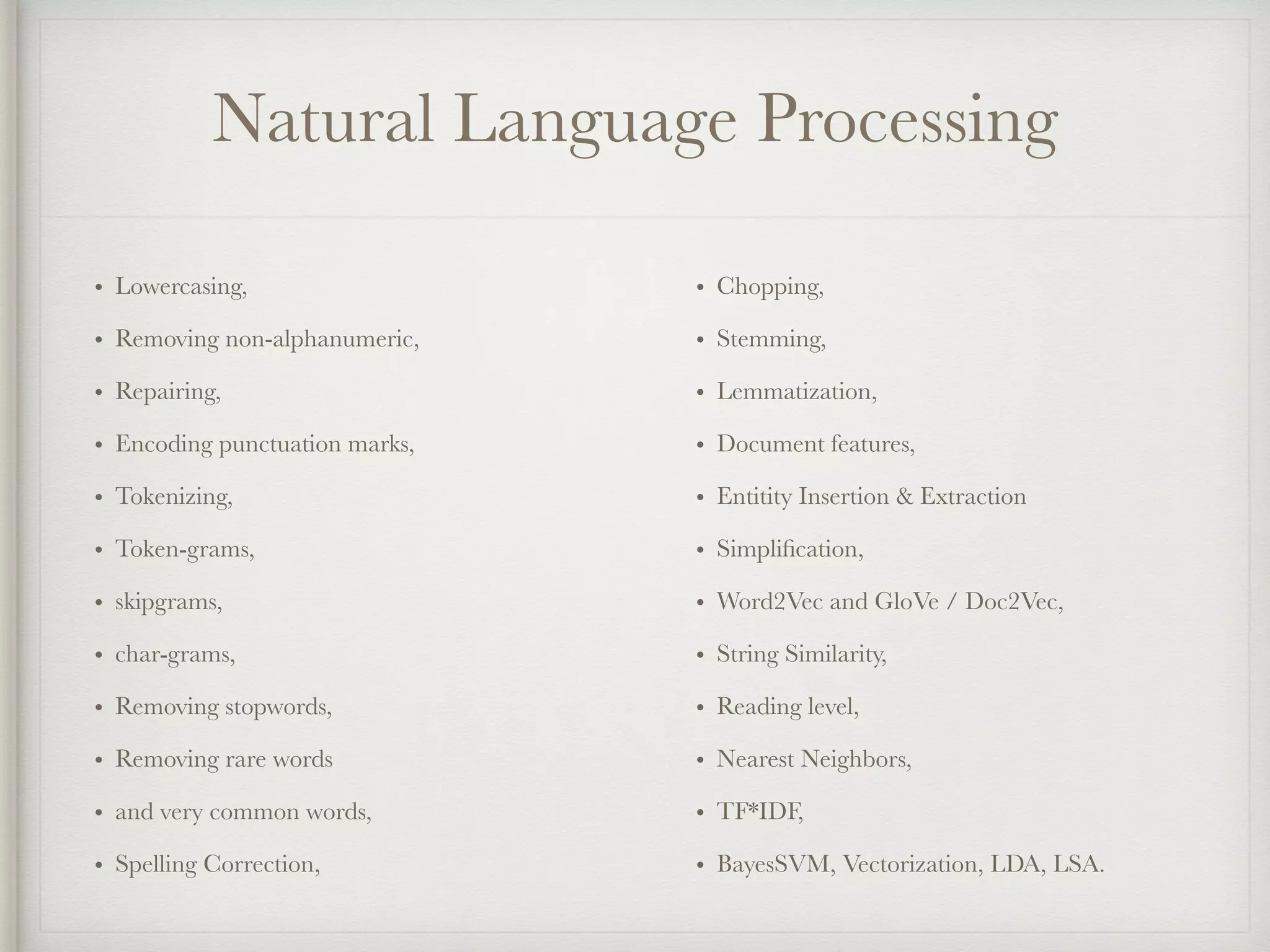
![Cleaning
• Lowercasing: Make tokens independant of capitalisation:
“I work at NASA” -> “i work at nasa”.
• Unidecode: Convert accented characters to their ascii-
counterparts: “Memórias Póstumas de Brás Cubas” ->
“Memorias Postumas de Bras Cubas”
• Removing non-alphanumeric: Clean text by removing
anything not in [a-z] [A-Z] [0-9]. “Breaking! Amsterdam
(2009)” -> “Breaking Amsterdam 2009”
• Repairing: Fix encoding issues or trim intertoken spaces.
“C a s a C a f é” -> “Casa Café”](https://image.slidesharecdn.com/feature-engineering-ml-meetup2-170220185754/75/Feature-Engineering-58-2048.jpg)
![Tokenizing
• Encode punctuation marks: Hardcode “!” and “?” as tokens.
• Tokenize: Chop sentences up in word tokens.
• N-Grams: Encode consecutive tokens as tokens: “I like the
Beatles” -> [“I like”, “like the”, “the Beatles”]
• Skip-grams: Encode consecutive tokens, but skip a few: “I like
the Beatles” -> [“I the”, “like Beatles”]
• Char-grams: Same as N-grams, but character level: “Beatles” -
> [“Bea”, “eat”, “atl”, “tle”, “les”]
• Affixes: Same as char-grams, but only the postfixes and prefixes](https://image.slidesharecdn.com/feature-engineering-ml-meetup2-170220185754/75/Feature-Engineering-59-2048.jpg)
